Navigating The Journey Ahead
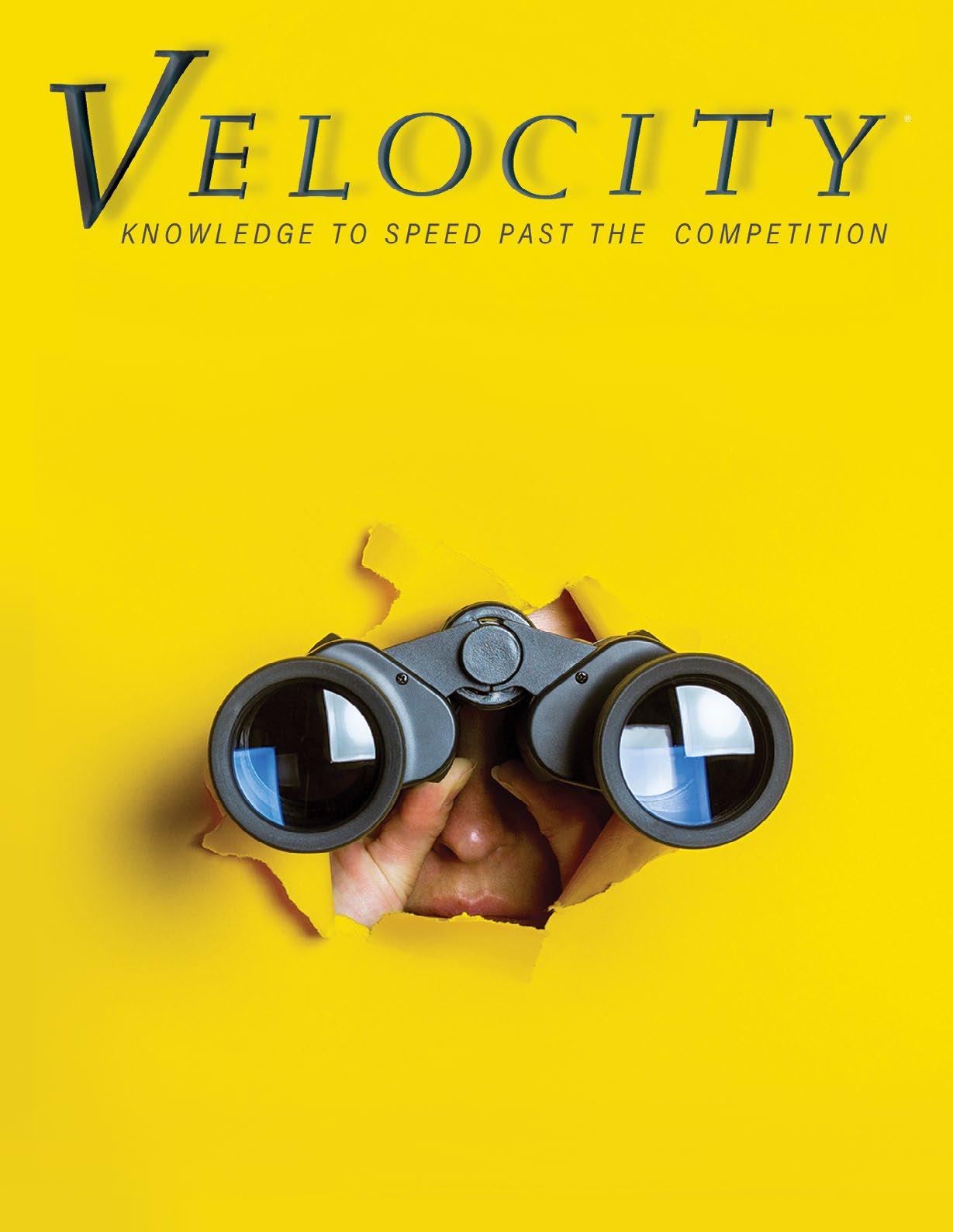





Your sales team may be exceptional at selling legacy products, but are they adept at co-creating mutual value with your most important customers? Today’s industry leaders recognize that it takes agility to transition from a transactional, productfocused organization to a strategic, customer-focused organization, and this includes a mindset-shift and focus that goes beyond the traditional sales process.
To get there, you’ll need a contemporary approach to sales and account management that is customized to your business and a collaborative methodology that thoroughly assesses your customers’ needs and focuses your cross-functional account teams on the entire customer experience, not just the sale.

At PMI, our experienced consultants will help you better align your sales team to engage more strategically with your customers. Our proven approach to selling value equips salespeople and account managers to co-discover what matters most to their customers, articulate and co-create value that connects with customer objectives, and grow and evolve trust-based customer relationships for increased retention and loyalty.
Our Value-Focused Selling solution will ensure predictable, repeatable and sustainable success through the deployment and implementation of a sales performance solution that fits your business, exceeds your requirements, and helps you engage, win and grow with your customers.
Read our latest use case and learn more about our approach to value co-creation at performancemethods.com.
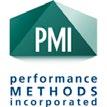
Our approach equips your team to co-discover what matters most to their customers and co-create value to grow and evolve trust-based customer relationships for increased retention and loyalty.




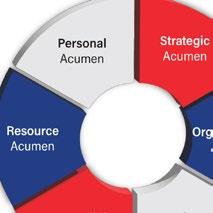





3M Company
Abbott
ABM Industries Inc.

Aggreko Agilent
Airbus Defence and Space Air Liquide
Allergan
Allied Universal (fka G4S USA)
AmerisourceBergen
Amgen Canada
Arcadis
Astellas
Avient Corporation
AVI-SPL
Axis Communications Inc.
Azenta Life Sciences
Bailey International Bayer AG
Bellevue University bioMérieux
Boehringer Ingelheim
Bracco Diagnostics
Brenntag Specialties Inc.
Buckman North America
Bunge CAS
CenterPoint Energy
Ceva Santé Animale
CH Robinson
Cisco Systems, Inc. Clarios
Cox Automotive CPC Worldwide Danaher Companies DHL
Donaldson Company, Inc. Ecolab
Elanco Animal Health
EMERSON Automation Solutions
Endress + Hauser
Essilor International
Exact Sciences
Expeditors
FCM
Freeman Greene, Tweed & Co.
Grifols Therapeutics Inc.
Henkel
Hilton Worldwide Honeywell Hovione Hyatt Hyland Hypertherm
IBM
IDEXX Laboratories, Inc.
Iris Powered by Generali John Deere
Johnson & Johnson Lilly USA, LLC
Lonza
LP Building Solutions Lubrizol Medtronic Merck+ Michelin
Mölnlycke Health Care
New York Power Authority Inc.
Nilfisk Novo Nordisk Inc. O-I
Organon LLC Otsuka US
Owens Corning
Pacific Gas and Electric Corporation
Pfizer, Inc. Premier Inc.
Rockwell Automation Saint-Gobain Schneider Electric Sealed Air Corp. Sherwin-Williams Sidel Siemens Solecta, Inc. Sonoco Suez Sunovion supplyFORCE Thales
The AAK Group
The Qt Company
Thermo Fisher Scientific Inc.
TÜV SÜD UL Solutions United Airlines
Universal Robots A/S Vallourec
VSP Global W. L. Gore & Associates, Inc. Wajax Corporation
Waters Corporation
West Pharmaceutical Services, Inc.

Wolters Kluwer Belgium WorkCare, Inc.
Zoetis
Zurich Insurance Group
Steve Andersen
President and Founder
PMI
Dino Bertani
Executive Director, International Strategic Account Management

AbbVie
Anju Birdy
Strategic Account Management Excellence, Vice President
Schneider Electric
Noel Capon
R.C. Kopf Professor of International Marketing Columbia Business School
Mauro Cerati
Senior Vice President, Global Customers Bunge
Dominique Côté
Owner and Founder COSAWI in/Sprl
Ron Davis
Executive Vice President, Head of Customer Management
Zurich Insurance Group
Jim Ford
Chief Commercial Officer Solecta, Inc.
*Chairman of the SAMA Board*
Denise Freier
President and CEO SAMA
*John F. Gardner
Retired - President, Global Strategic Accounts Emerson Automation Solutions
*Rosemary Heneghan
Retired - Director, International Sales & Operations, Worldwide IBM
Gerilyn Horan

Vice President, Group Sales & Strategic Accounts
Hilton
Denise Juliano
Group Vice President, Life Sciences Premier Inc.
Renae Leary
Chief Commercial Officer – Americas Ansell
Mike Moorman
Managing Principal, Sales Solutions
ZS
Joseph Pinzon
Regional Vice President, Corporate Key Accounts Konica Minolta
Dr. Hajo Rapp
SVP Strategic Account Management & Sales Excellence
TÜV SÜD AG
Kevin Reilly
Global Sales Development Leader, 3M Healthcare Business Group 3M Company
Tony Stanich
VP Global Corporate Accounts - Food & Beverage for Water and Process Services Nalco, an Ecolab Company
Jennifer Stanley Partner McKinsey & Company
*Dr. Kaj Storbacka
Retired - Hanken Foundation Professor Hanken School of Economics
Geoff Williams
Vice President, Global Accounts Danfoss
*Distinguished Board Advisors (lifetime contributors; nonvoting members)
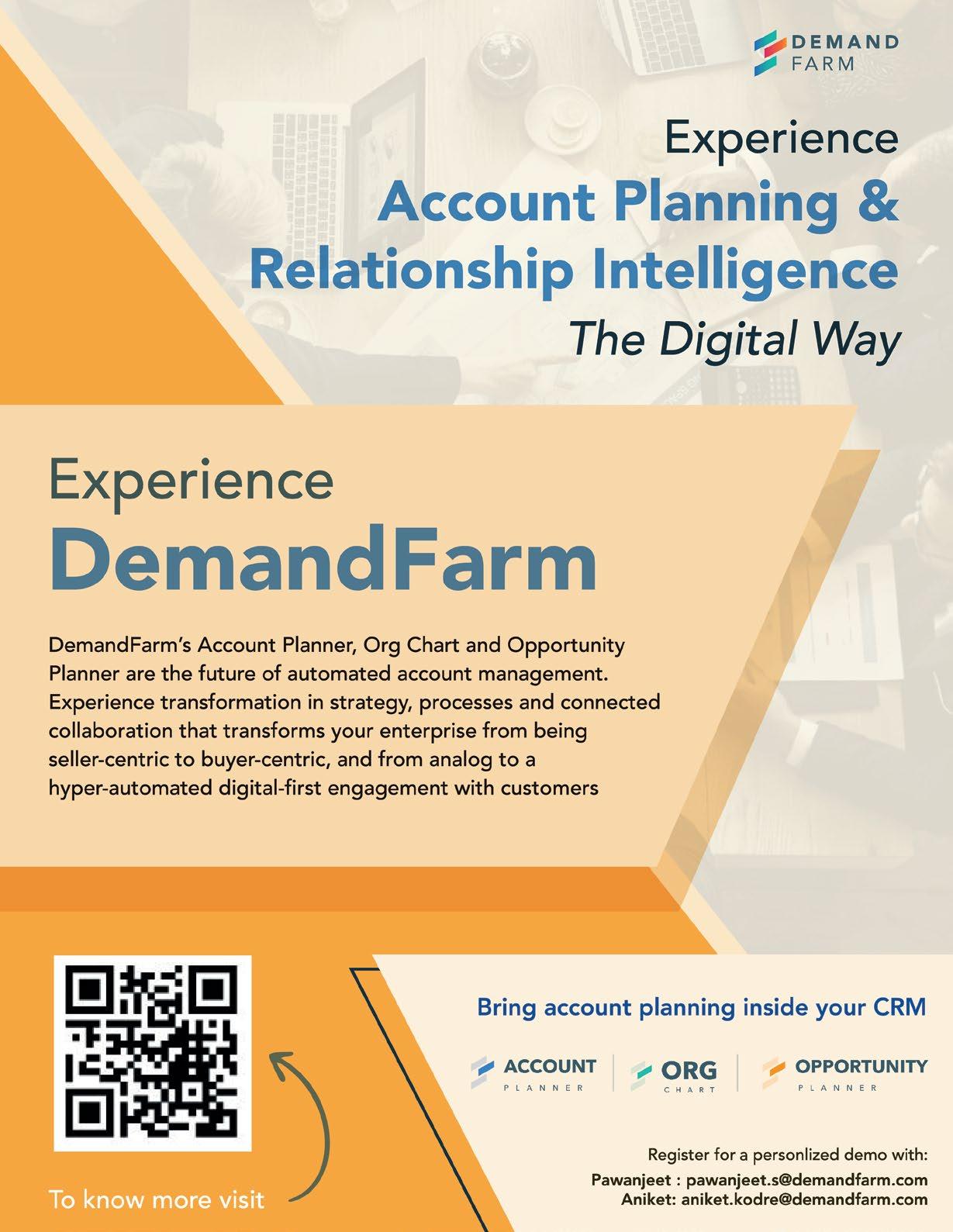
Publisher: Denise Freier
Editor-in-Chief: Harvey Dunham
Associate Editor: Nic Halverson
Creative Director: Aimee Waddell
Advertising: Ashley Davis


President & CEO: Denise Freier
Director of Finance, Meetings and Operations: Fran Schwartz
Senior Manager, Meetings and Events & Individual
Member Liaison: Rhodonna Espinosa
Finance & Operations Manager: Jaclyn Such Registration Manager: Shannon Feeney
Managing Director, Strategy and Marketing: Harvey Dunham
Director, Customer Solutions: Christopher Jensen
Sr. Corporate Account Manager: Bobbie Zimny
Corporate Account Manager: Michael Johnson Sr. Corporate Solutions Manager: Ed Zupanc Salesforce Analyst/Administrator: Erin Pallesen
Business Leader – AMS: Stephanie Fahey
Knowledge, Certification & Training
Director, Knowledge, Certification & Training: Libby Souder

Assistant Director of Certification & Training: Frankie Cusimano
Assistant Director, Knowledge & Training: David Schweizer
Knowledge and Training Manager: Brad Maloney
General Manager, Research & Customer Experience: Joel Schaafsma
& Communications
Creative Director: Aimee Waddell
Associate Editor: Nic Halverson
Marketing Manager & Sponsorship: Ashley Davis
Join the conversation with SAMA on LinkedIn at www.linkedin.com/company/strategic-account-management-association.
Follow SAMA on Twitter at www.twitter.com/samatweet.
Whether it’s to heed the call of adventure or take decisive action in a time of crisis, when we embark upon journeys, we accept change and eventually learn to embrace it. The first initial steps of a journey, however, can be daunting and full of doubt about the trials and tribulations that lie ahead. But with the right set of tools — a road map, a compass, a GPS device — to navigate the blind spots and unexpected obstacles, we find that we possess the courage, strategy, and acumen to not only triumph, but see the journey for what it truly is: a thrill ing discovery of the self.
Upon your journey as SAM, you’re no stranger to the pitfalls and risks that can affect your industry. Still, as you maneuvered your way through the pandemic and supply chain disruptions, the last couple years have probably left you feeling like you got blindsided by a few unexpected “black swan events.”
Here at SAMA, it’s our belief that by facilitating a knowledge exchange and sharing best practices, we can provide you with the right navigational tools to anticipate black swan events. These tools can help adjust your focus, so when you look through your binoculars toward the future, these highly prob able and highly predictable events will appear as “gray rhinos,” as you will soon read about in this issue of Velocity
In their piece “Managing the Hidden Buying Journey,” Martyn Lewis and Anthony Rocha invite you to peek through the key hole to see “how much hidden friction there can be in the blind spots of a seller.” Their article will not only give you a sharper image of what’s behind a customer’s door, it will also help you open that door and cross the threshold to generate growth and co-create value.
“Nothing is as constant as change, and strategic account management is not exempt from constant evolution,” writes Dr. Axel Thoma. For the journey ahead, his piece “Unlocking New Value With the ’Value Creation Compass’” is full of sage advice to help you stay on positive footing as you follow the path of your customer relationships. And, according to Noel Capon and Gus Maikish, you’d be wise to stay on that path, since “the customer relationship is the one thing that can never be disrupted or replaced.” They outline this and more
in their wonderful article “The Acumen Sextet: An Evergreen Framework for Account Management and Customer Success” about what SAMs “must master to do right by their own firms and their customers.”
This leads us to high-performance territory, where Dr. Javier Marcos occupies a unique vantage point. In “The SAM as a Strategist: Defining the Approach to Transform Your Key Customer’s Business,” Marcos elaborates on how elite SAMs must use strategic and intrapreneurial abilities to get everyone on board.
Coupling all this guidance with the wisdom of David R. Barnes Jr.’s “Emerging SAM Opportunity: Your Customer’s Diversity, Equity, Inclusion, and Belonging Strategy,” we come to the final stage of the journey — the culmination — marked by success and achievement. Here, we highlight our 2022 SAMA Excellence Awards winners, whose precedent we can follow on our own path to greatness. In many a quest, it’s the elders who are the torch bearers of expertise, as is the case with the co-winners of our outstanding mature program of the year — AVI-SPL and Brenntag.
Read on to learn about AVI-SPL’s meteoric rise to Trusted Advisor status and how they did it by securing unanimous internal buy-in from the get-go. And no successful journey is complete without a celebratory toast, right? In raising his glass to Brenntag (and AVI-SPL), SAMA’s own Harvey Dunham uncorks the “many ingredients [that] must come together in the right proportions at the right time to create” a successful SAM program and how it “must age for many years to reach a point of excellence.”
As I embark upon my own new adventure as the new associ ate editor of Velocity, I look forward to sharing this issue — and this journey — with you.
Nic Halverson Associate Editor Strategic Account Management Association (SAMA)


We don’t use slightly customized generic methodology to teach your team general negotiation skills. Our work is 100% custom to you and focused on how to:
• Negotiate your actual commercial terms
• For your actual products and services
• Against your actual competitors
• Given actual verbatim tactics from your customers
Negotiation has long been thought of as unpredictable and hard to measure. Sadly, it’s how most legacy training companies define it and treat it. The result? Long lists of tactics and countermeasures that prepare your team for, well, “random.”
Our approach is different. Our research (yes, we have proof) shows that buyer tactics are 97% predictable and fall into two categories
We’ll train your team to systematically plan their negotiation by answering just 3 questions.
Easy. Account managers can do it, managers can coach it.
Case in point:
• Documented case studies that show 466% average ROI for our clients .
• Clients include Google, Microsoft, FedEx, across 47 countries over 17 years.
It’s all we do. And we’re pretty good at it.
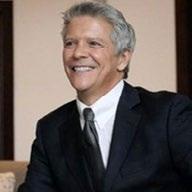
If you like our approach, let’s jump on a call or drop me a note to discuss.
Thanks for reading, Brian CALL ME AT: 312.925.9326 | EMAIL ME AT: BJD@THINK5600.COM
In their recent article “It’s time for CEOs to put suppliers first” for Fortune.com, authors Christian Schuh, Wolfgang Schnellbächer, Alenka Triplat, and Daniel Weise check off the many ingredients that created a recipe for disaster for international business lead ers in recent years. When combined, the U.S.-China trade war, the COVID-19 pandemic, rampant inflation, and the Russian inva sion of Ukraine served up a bitter dish to make us feel like we are living in an “age of crisis.”
These immense challenges wreaked havoc for CEOs running global companies with worldwide footprints. As supply chain disruptions rippled across industries, and bottom lines and profit margins took a hit, many CEOs, as the authors observe, were “quick to make their excuses, claiming these were unexpected ’black swan’ events that could never have been predicted.”
But could these events have been predicted? Should CEOs have been better prepared?
“In a word, yes,” the authors write. “None of these events [were] a ’black swan’ event, a term coined by bestselling author Nassim Nicholas Taleb to describe a random, highly improbable occurrence. On the contrary, they were what the business writer Michele Wucker has called ’gray rhino’ events: highly probable, highly predictable, high-impact but neglected threats that were charging toward companies like a crash of rhinos.”
The authors — all partners at the Boston Consulting Group and coauthors of the book “Profit From the Source: Transforming Your Business by Putting Suppliers at the Core” — point to past events, such as Russia’s 2014 annexation of the Ukrainian region of Crimea and previous pandemics, epidemics, and outbreaks, that foreshadowed our current “age of crisis.”
So, why were leaders of some of the world’s largest multina tional companies caught off guard by these events? Why didn’t they see or hear the crash of the charging rhinos?
“In our view, it is because today’s CEOs are too introspective, too focused on the here and now, and oblivious of what is hap pening in the rest of the world,” the authors proclaim. “Research from Harvard Business School found that CEOs spend only 1% of their time with their suppliers. Given that suppliers account for more than half of a typical company’s budget, this is not only impractical, it borders on the absurd.”
Lest we forget: suppliers are critical
gears in an organizational ecosystem. “When they stop, the company they supply stops, too,” the authors correctly assert. Suppliers are the lifeblood of the company — providers of “mission-critical components,” not to mention “commercial intel ligence” about competitors and current trends. “As such,” the authors write, “they are a window to the world beyond the confines of the corporate headquarters.”
So, what can CEOs do to predict and prepare for future supplychain disruptions?
“They should put suppliers at the very heart of their business,” the authors declare. “For too long, these vendors have been marginalized, treated as dispensable, come-and-go providers of goods and services who can be hired in good times and fired in bad times. At a personal level, CEOs should make supplier relations their leadership imperative by spending more time with them. In particular, they should nurture one-on-one relationships with the CEOs of their top suppliers, the 20 to 40 companies that account for half of their supplier budget. So often, CEOs are surrounded by corporate yes-men.”

In a nutshell, supplier CEOs occupy a unique position. “Unencumbered by institutional loyalties,” the authors write, they “can tell CEOs what they should hear: How it really is. At

a companywide level, CEOs should raise the profile of the chief procurement officer and revamp their procurement function, which ’owns’ the corporate relationship with suppliers.”
At SAMA, we couldn’t agree more. Suppliers are key in their ability to deliver value to their customers. And the CEO should know who their strategic suppliers are, and they should be in contact with them. But there are many people that a CEO should be in contact with — everybody wants a piece of their time. Most large companies have thousands of sup pliers. Being strategic about identifying the important ones and developing relationships with them, deciding how and where to focus one’s time — this is the central challenge for a CEO (and the exact challenge of a SAM program, as well).
Which really gives rise to the question, “How can the CEO do this at scale?”
For answers to this question, look no further than AVI-SPL, co-winner of SAMA’s Excellence Award for Outstanding Mature Program of 2022. As you will read later in this issue, AVI-SPL, a Tampa-based provider of collabora tion and audio video technologies, is a perfect example of how quickly a SAM program can take flight when there is unilateral, internal buy-in. From the moment the senior leadership proposed the program and AVI-SPL’s Board of Directors sponsored it, there was unanimous support from the entire executive team — the CEO, COO, CFO, EVP of Technology & Innovation, and EVP of Sales and Marketing — to promote the program and advocate for its growth as active and engaging participants.
One of the main ways AVI-SPL achieved such success — at scale — was through their development of a Customer Advisory Board (CAB), which included senior leaders from customer com panies. Each of AVI-SPL’s Global Accounts was asked to partici pate in the CAB, giving them exclusive C-suite access to strategy discussions, oversight, peer-to-peer knowledge exchanges, and community building. Aligning in such a symmetrical way builds trust, relationships, and joint value creation, and it’s the reason
why the C-suite of AVI-SPL’s strategic accounts see them as trusted advisors.

In AVI-SPL’s case, they applied their CAB — as the name sug gests — to their customers. However, SAMA spoke with Betsy Westhafer, CEO of The Congruity Group, an organization that builds and deploys Customer Advisory Boards, and we asked: Can the same reasoning and structure behind CABs be applied to suppliers, too?
“Absolutely,” Westhafer said. “It’s bidirec tional. The goal is to have mutually beneficial, consistent, and valuedriven dialogue. Whether that’s between the C-suite and their strategic accounts or between the C-suite and their strategic suppliers, the goal is the same. How can we work better together now and into the future, and how can we strengthen the rela tionships in the process?
We believe there is no better way to insulate your organization from black swans, gray rhinos, or any other impending disruption than with a commitment to having these types of insightful conversations,” Westhafer concluded.
If more CEOs followed this example of putting, as the authors suggest, “their suppliers and their procurement function at the heart of their business,” we at SAMA agree that “they too can stay one step ahead of their rivals.” n
Adapted from “It’s time for CEOs to put suppliers first,” published at Fortune.com, by Christian Schuh, Wolfgang Schnellbächer, Alenka Triplat, and Daniel Weise, partners at the Boston Consulting Group and coauthors of the book “Profit From the Source: Transforming Your Business by Putting Suppliers at the Core.” https://fortune.com/2022/06/27/ceo-suppliers-firstsupply-chain-crisis-uncertainty-economy-world-business-leadership-bcg/
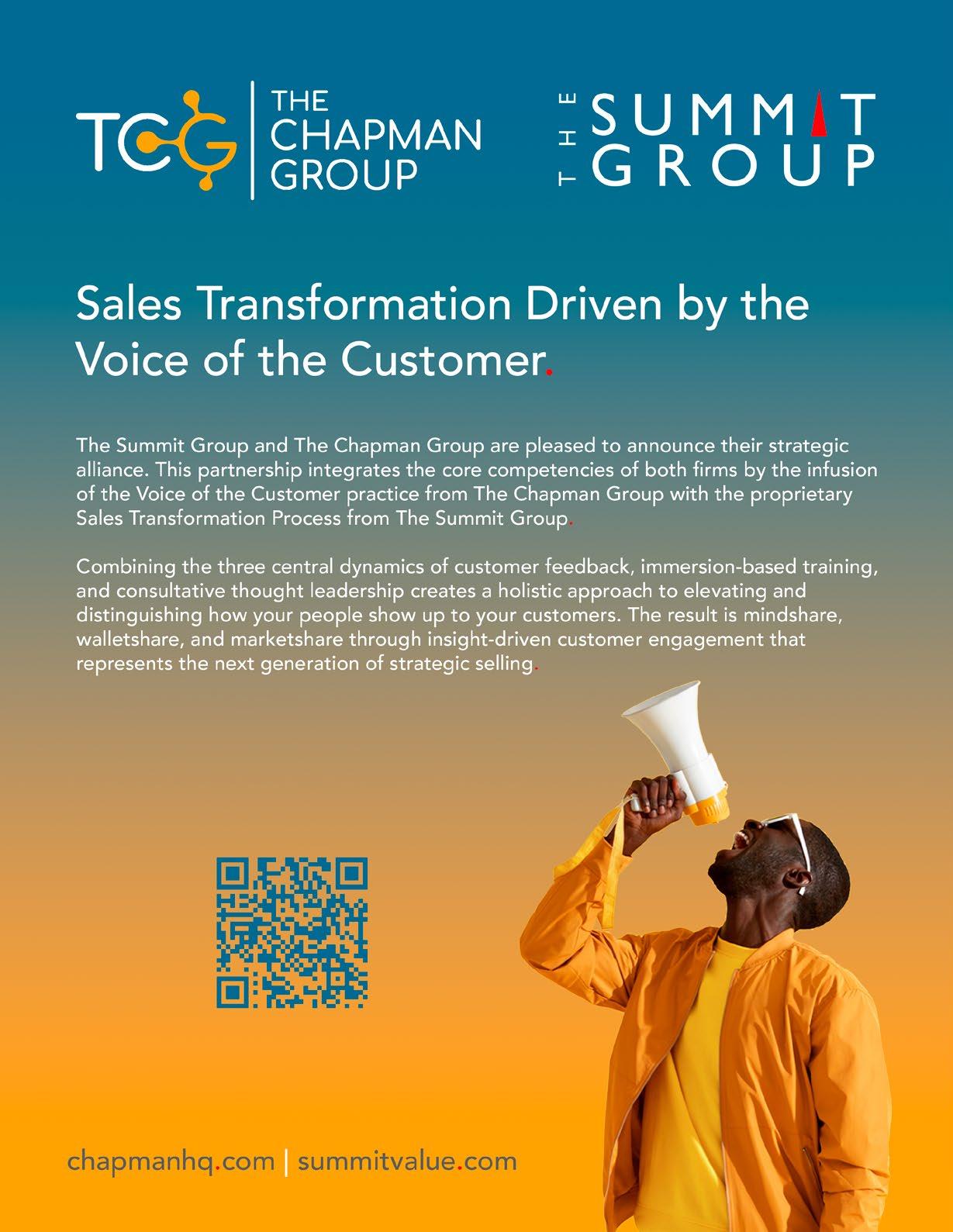





Intelligent software for account planning and relationship mapping in Salesforce to retain and grow your most important customers.
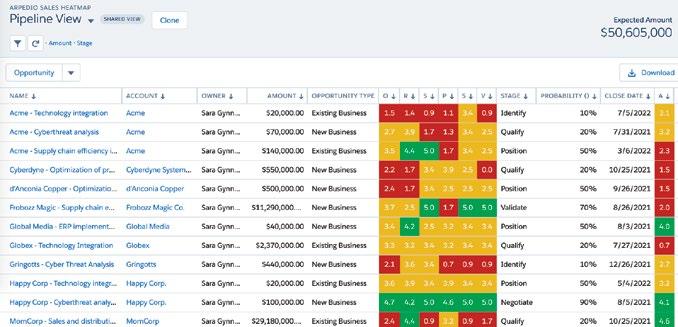


ARPEDIO's simple user interface, the SAMA framework, and the high level of customizability made it extremely easy to implement The implementation has improved our understanding of our clients and focused our efforts in the areas where we can make the biggest impact.
Denise Juliano, Group VP of Life Sciences, Premier Inc.
According to a recent survey among the SAMA community, two-thirds positively indicate that they have a defined process for quantifying value propositions for their customers. However, only one-third indicate that they consistently go back to quantify the realized value. When customer relationships are tested through organizational change or other impacting factors, a documented proven success record is important to smooth that transition.
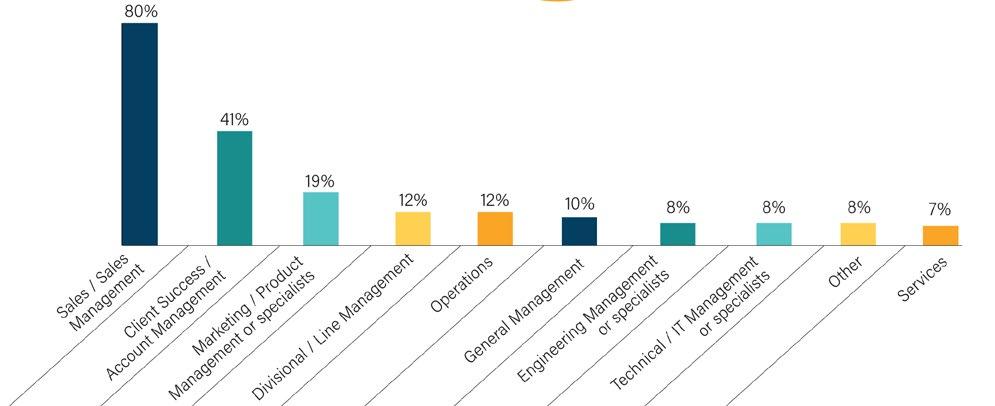


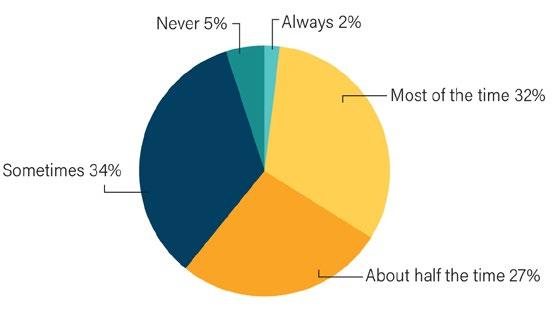

To what degree would you say your organization has a defined process for quantifying value propositions for your customers?
Post implementation, how often does your organization get customer agreement on quantified realized value?
Most companies start their SAM talent search from within their sales organization. However, it is important to remember that being a top-performing sales professional does not always translate to guaranteed success in a strategic account management role. Strong strategic thinkers who can effectively engage and create value with the customer can also come from other departments within the company. Keep that in mind next time you are seeking talent for the SAM role.
Of the SAMs hired in your company, from where were they promoted or transferred? (Check all that apply)

 By David R. Barnes Jr. Co-Founder, Managing Partner Diversity Inclusion Equity Group
By David R. Barnes Jr. Co-Founder, Managing Partner Diversity Inclusion Equity Group
The importance of a company’s Diversity, Equity, Inclusion, and Belonging (DEI&B) strategies to their overall performance has skyrocketed in the past few years. In a recent Gartner CEO survey, “organizational culture” was their #3 priority. In 2021, Fortune Magazine inserted a new metric into its Fortune 500 ranking called “Measure Up,” which ranks an organization’s level of embracing DEI&B practices. Refinitiv is another well-respected organization that selects the top one hundred global companies that demonstrate the most robust level of diversity, equity, inclusion, and belonging in their organizations.
It’s time for businesses to look at all their vendor relationships to ensure they’re not complicit in supporting injustice within another organization. Investigating your vendors’ commitment to diversity and inclusion is not just necessary from an ethical standpoint but from a competitive perspective as well. – ADP Guidance to Customers
More importantly, organizations are now asking for more informa tion from vendor partners regarding their DEI&B strategies. As more companies see value in these initiatives, this industry trend will likely intensify. As proof, organizations like Society for Human Resource Management (SHRM) and ADP are providing companies with the following guidance.
So, what are the emerging opportunities for a SAM within this new landscape?
There are two ways to address this trend. You can reactively pro vide information about your organization’s diversity, equity, inclusion, and belonging strategy, activities, and results. Or, better yet, you can proactively take the lead and connect DEI&B strategy leaders in both organizations, as you would your Chief Operating Officer, Chief Marketing Officer, Chief Technology Officer, etc., to form strategic relationships to enhance the business partnership.
Having had a 30-plus-year career in sales and having been a SAM for eight years, I always ask current customers and pros pects, “How are you monetizing your diversity, equity, inclusion, and belonging program to contribute to your bottom-line revenue or profitability? Is your DEI&B program robust and effective?”
Inevitably, whether the answer to that question is positive or negative, the conversation brings up the question: What are you requiring of your vendors, as it relates to your diversity, equity, inclusion, and belonging strategy? In many Fortune 500 compa nies and smaller companies, the responsibility for that strategy usually resides with the Chief Diversity Officer.
Identify your organization’s DEI&B strategy. Discuss this opportunity and see if they are open to engaging with their counterpart at the customer level. Discuss what real-world benefits they see for both organizations. If for any reason they are not ready to engage, “stop and don’t pass go.” Know that you have planted a seed. Nurture it and someday there will be a harvest.
If the answer is “yes,” go through the appropriate channels in the customer organization, have the same conversation, and follow the same proto col as you did with your organization’s diversity, equity, inclusion, and belonging leader. Consider setting up a meeting for all parties involved.
• In the initial meeting, have only the SAM discuss the potential opportunities, then hand it off to both leaders to take the ball and run with it.
Depending on your company’s SAM planning process and customer interaction agenda, there should be regular internal updates on the prog ress of this initiative with the customer.
“Diversity, equity, and inclusion are cornerstone priorities for our organization that go beyond specific programs,” James Chalmers, CEO of Cortex Design, told Forbes.com. “These pri orities have a direct correlation with stronger short-, mid-, and long-term financial performance. Diverse teams identify and explore a broader range of opportunities and identify risks more effectively, while equitable and inclusive environments encour age free-flowing ideation.”
As the importance of DEI&B strategies — and how they affect bottom lines — resonates across industries, what is the oppor tunity for the SAM? To be clear, the opportunity may not be for every selling organization or every SAM, but there are some prerequisite “must haves” for organizations and customers before the opportunity can be realized.
1. Both your organization and the buying organization should have a diversity, equity, inclusion, and belonging strategy busi ness owner that sits on the executive team.

2. Both your organization and the buying organization should see their DEI&B strategies as an integral part of the overall business strategy of their organizations.
3. Both your organization and the buying organization are open to exploring opportunities to partner with each other to create internal and customer-facing solutions that could be executed without partnering with each other.
In some organizations, the diversity, equity, inclusion, and belonging strategy may be part of the organization’s sustainability strategy and the “prerequisites” may already exist. However, note that every company’s readiness to partner on DEI&B strategy is fluid and dynamic. Some companies may have already broached the subject. Other companies might be ready to have the conver sation, but just haven’t contacted you yet. And some companies are not ready, but are moving toward the opportunity to do so.
Recently, I moderated a SAMA virtual conversation to discuss DEI&B topics with Joseph Machicote, Chief Diversity Officer at Premier Inc., who has a background in sales, and two members of the SAMA Advisory Board. All in all, more than 20 participants contributed to a rich conversation, and some key questions emerged that we feel compelled to share.
Answer: You do not need to know a lot about DEI&B strategies at all. You just need to identify the diversity, equity, inclusion, and belonging business owner in your organization and the buying organization, and explain to them that this is an extension of the
1. I am not an expert on diversity, equity, inclusion, and belonging. How much do I have to know to get this process started?
pre-established partnering process of your organization. Connect with them, keep abreast of their meeting’s outcomes, insert them into your strategic plan, then facilitate where needed to achieve those goals.
customer’s executive team. But if you seek guidance, see the Road Map for Success sidebar on the previous page.
Answer: There is a lot to unpack with this question. To be concise, one suggestion could be for that person to view a diversity, equity, inclusion, and belonging strategy as just another pure-business initiative to execute, like operations, marketing, or sales, which they don’t necessarily have to be excited about. Or, perhaps this is a chance for them to examine whether or not their values and beliefs align with those of their organization, and whether or not they are a “good fit” at the company.
Looking ahead toward next steps, we are currently canvassing organizations and SAM teams to ensure that the best practices SAMA provides on DEI&B initiatives are rooted in real-world application and directly related to the SAM’s role. As we continue to seek and share best practices, we are excited to explore all the opportunities that diversity, equity, inclusion, and belonging strategies can bring, and how they can elevate relationships, bring returns, and add value between organizations and their customers. We look forward to all our members joining us in this important conversation. n
1 Forbes.com (2021). 11 Ways DEI in the Workplace Can Boost a Company’s Bottom Line. https://www.forbes.com/sites/ forbesbusinessdevelopmentcouncil/2021/12/15/11-ways-dei-in-theworkplace-can-boost-a-companys-bottom-line.

Answer: This simple answer is you already have it if you are doing this with other members of your executive team and your
David R. Barnes Jr. is a Co-Founder, Managing Partner, and DEI-Performance Consultant at the Diversity Inclusion Equity Group, an organization that facilitates the sustainability of social innovation within organizations by marrying business growth to an optimal, inclusive, and diverse culture. David can be contacted at david@diversityinclusionequitygroup.com.

Just because you can’t travel doesn’t mean you have to stop developing your account management skills.
Your customers rely on you to help them solve their biggest business challenges. For you, that means probing them for opportunities and then marshalling your internal resources to create new, innovative solutions that solve your customers’ most pressing issues.
SAMA online courses offer the same high-quality, interactive training as our in-person SAMA Academy but at your own pace and from the comfort of your home office.
For more information, please visit https://bit.ly/samaonlinetraining.
2. What if someone isn’t personally excited to move forward with a DEI&B initiative?
3. Is there a road map I can follow to start this process?


In 25 years of consulting, I can safely say that our team at Market-Partners Inc. has never seen a product or service that was valueless. In fact, of the more than 200 clients who have brought us in, the majority of their offerings have had a clear, demonstrable, often proven return on investment. So why then do so many customers have second thoughts on, or even flatly turn down, what we know to be great offerings?

Our very first client engagement is what sparked our interest in buyer behavior. This initial client’s service had seemingly no down sides for customers. Since the costs to the buyer were completely tied to the savings the buyer received, if there were no savings, there were no costs. With such an obviously ben eficial purchase, our client was left pondering why all their prospects were not buying. That is when we began interviewing would-be cus tomers in hopes of finding the sources of their hesitation. From our first discussions, it became apparent why this purchase — like so many others — was not so “obvious” after all.
These conversations tipped us off to how much hidden friction there can be in the blind spots of a seller. There are key players, activi ties, considerations, concerns, and decisions all affecting the likelihood of a purchase that most selling organizations are not aware of or involved in. We now recognize these elements as essential parts of the buying journey.

However, these factors are not random. Once a buying journey has been properly mapped, it becomes evident that buyers, within a spe cific market, buy in remarkably similar ways. This means firms can create strategies to help account managers influence these onceinvisible elements, thus generating growth by helping customers buy.
Since before the inception of MarketPartners Inc., buying has been changing — and not in ways that make things easier for buyers, let alone sellers. The unfortunate truth is that no matter how compelling an offering’s value may be, buying has been complicated by these changes in critical ways that cannot be overrid den by value alone.
• No Single Decision Maker Today, buy ing decisions are comprised of a dynamic network of individuals, sometimes including individuals outside the company itself. Many of these individuals — notably those not tra ditionally considered key players — have the power to slow or stop a buying journey in its entirety. One of the most common responses we receive when asking about how part of a purchasing decision was reached could be summarized as, “I don’t know, but a lot of people were involved.”
• Unprecedented Choice Even if an offering has a proven and easily demonstrable ROI, there are countless ways an organiza tion can reduce costs, increase market share, boost employee morale, etc. It is genuinely rare for one offering to be the only conceivable solution to a problem or bar none the biggest opportunity every firm has, or for an initiative to be so timesensitive it supersedes every other plausible course of action.
• Constrained Resources Regardless of the size of an organiza tion, there is still a finite amount of resources. Additionally, most organizations are not actively sitting on additional resources when they are available. Whether it is time, money, or people, we have found in most cases that resources are fully deployed and difficult to reallocate without substantial pushback or internal bureaucracy.
• Information Overload The advent of the internet has given buyers access to an unprecedented amount of both informa tion and misinformation. This bottomless well means would-be buyers can spend untold hours just doing research: reading reviews, diving into consulting reports, cross-referencing case studies, learning about your suppliers, and networking with your previous clients. This not only takes time, but also adds an additional layer of complexity to all buying journeys — espe cially when multiple stakeholders come back with different, or even conflicting, information.
There is one more point that cannot be overemphasized: buy ers are not focused on “buying,” they are focused on using and benefiting.
A significant amount of the activity across the buying journey is then naturally dedicated to how the organization will use the proposed product or service and how they will realize their investment’s benefit. This is why many firms have transitioned to a more inclusive approach, one that brings in stakeholders and end users across departments who, as stated previously, would not be imaged as buyers. These are instead the parties that would be impacted in some capacity by the offering’s envisioned use and adoption.
We see these stakeholders given a more prominent voice throughout the buying journey as they plan for adoption, oversee changes in workflow, train users, mitigate risk, and manage integration with existing systems, technologies, and processes. As they are the ones preparing for an offering logistically, they are frequently seen as experts in the implications of any offerings a firm is evaluating, including next steps, potential barriers, addi tional requirements, and impact on suppliers and approaches.
A market’s end-to-end buying journey therefore encompasses numerous players, activities, and decisions both big and small. Some of these players, activities, and decisions will be clearly visible to an account manager, and accordingly, we have found that account managers usually do their best to play an active role in these parts. That said, there is often more going on behind the scenes. Almost every account manager has heard that their champions or key contact needs to “get folks onside,” “gain align ment,” “do some internal work,” or “solve a few issues.” These casual comments clue us into the hidden buying journey.
There are two central reasons why key contacts share with an account manager that they “just need to sort out a couple of things” when in reality they have a mountain of effort and competing agendas to climb.
The contact may truly believe the task is not that difficult, most likely because they have never purchased your offering before. In spite of their positive attitude though, this naivety can be costly as activities prove more challenging than originally thought. Not only does cumulative fatigue eventually set in but mobilizing an organization through interest to a purchase is one of the most taxing parts for champions during any buying journey.
Perhaps most crucially is that the contact — reflective of the buyer as a whole — does not perceive the account manager can assist them with these tasks in a meaningful way. Therefore, the contact is somewhat dismissive of the account manager’s ability to contribute, even if it is not intentionally exclusionary.
The perceptions in points one and two have caused a mea surable disconnect between sellers and buyers. Our research shows that buyers do not reach out to salespeople until they are at least 50% of the way through their buying journey. Moreover, salespeople are typically involved in less than 10% of a buyer’s overall buying activities.
Regardless of which has had more of an impact on these statistics, in either scenario, the account manager has become detached from the buying journey. Worst of all, if the account manager does leave the journey with their contact — expecting them to manage the appropriate initiatives and convince the necessary parties to come onside — that journey is far less likely to result in a purchase.
As mentioned previously, many account managers are not aware of the internal challenges their buyers are facing given the small lens in which they have to view the buying journey. This often leads to a critical situation where an account manager has received verbal commitment from a buyer and understandably forecasted the sale.

Although the account manager imagines their champion is handling things from there, in the hidden buying journey, that champion is becoming bogged down with internal resistance. As the buying process proves harder than they imagined, without someone to guide them, the contact might soon decide the offering is no longer worth the effort. This is a huge part of why we find over 50% of buying journeys end in “no decision.”
Ironically, while it is probably a cus tomer’s first time navigating the pur chase of an offering, it is probably not an account manager’s first time watching a customer do so. If too focused upon why a customer should buy their offering, an account manager may miss the gold mine of insight they have in terms of how to purchase their offering. Even if they do not know every detail, they at least have a good outline of what happens, who gets involved, and where organizations get tied up.
This is why we believe account managers are in the perfect position to both support and positively influence the buying journey — and why their organizations should move to back them. Not only does a more customer-centric and buying-centric approach differentiate a business from those using more traditional sales approaches, it also capitalizes on a massive growth opportunity by way of helping customers buy.
The good news is that every account manager does not have to work this out for themselves. As we shared, buyers in a particular market, when buying a specific offering, will behave in remarkably similar ways. This enables organizations to decode the market’s buying journey and provide an insight-driven sales playbook for account managers, describing how to navigate and
support the customer through each stage of their buying journey.
As such, we are proposing a three-step action plan to bring these ideas to fruition:
I. Map the Market’s End-to-End Buying Journey: Understand exactly how your customers buy and, most importantly, what slows and stops their journeys.
II. Create the Market Engagement Strategy: Build an engage ment strategy based on your customer’s buying journey to effectively support their buying activities.
III. Provide the Sales Road Map (Buying Journey Navigator): Translate the engagement strategy into step-dependent action items, supporting your buyer throughout their buying journey.
Before you can overcome the hidden friction with your cus tomer’s buying journey, we must start by under standing how customers buy.
Over our decades of research, we have developed a model to decode and develop a map for any buying journey. The key is the Buying Journey DNA, which are the six strands (or factors) that comprise and influence all buying journeys.
While the nature of these strands can vary greatly between markets, a similar DNA code will define a single market; conversely, if two buyers purchase the same offering in a different manner, that indicates two distinct markets.
The six strands of the Buying Journey DNA are as follows.
1. Triggers (and Dependencies): The catalysts and prerequi sites that initiate and precede a buying journey.
2. Steps: The activities and stages in which a buyer will likely engage.
3. Key Players: The relevant individuals and groups across all the steps of the buying journey.
4. Buying Style: How a buyer determines what and where to buy.
5. Value Drivers: The motivations of the buyer.
6. Buying Concerns: The inhibitors that can slow and/or stop the buying journey.
It is the DNA of a buying journey that forms the basis of a comprehensive market engagement. Keep in mind that strands three through six can all, and likely will, change with each step of the buying journey. This can occur for many reasons, including buyers learning more about the offering, buyers better under standing their own needs and situation, or new players and agendas getting involved.
Equally relevant to how customers buy is why they do not. Our data show more than 90% of concerns go unaddressed by sales and marketing, so these hurdles are of special interest for those seeking the hidden friction within their market’s buying journey.

There are nine distinct categories of buying concerns, any one of which can derail a buying journey from its tracks. Like journeys as a whole, there is great commonality of buying concerns across each step within a specific market.
1. Process: The actual process (i.e., purchasing, sourcing, and so on) within the buying organization expressly for the acquisition of this type of product or service.
2. Priority: The urgency and timing of the purchase, and how it aligns with the organization’s current and upcoming directives, strategies, and goals.
3. Individual: The personal motivations and objections of the individual “carrying the ball” at any stage of the buying journey.
4. Organizational: The “political” friction, including all the vari ous agendas, objections, and concerns that are likely to arise across the organization.
5. Alternatives: Any and all alternatives an organization may consider before they move forward with a particular acquisi tion, including doing nothing.
6. Business: The fiscal side of the equation — the business case. Is there a complete and compelling business reason to trigger and complete the buying journey?
7. Implications: The logical implications of acquiring a certain offering — what actually happens when someone buys some thing.
8. Fit: The way a potential acquisition aligns with how and what that company would usually buy.
9. Change: The intangible changes, including the very percep tion of change, that must occur to adopt the new offering. This concern can be especially deadly and is potential deal-breaker territory.
While some buying concerns are very straightforward and objective, others are completely subjective and emotional. Handling a long list of concerns like this may seem complicated at first, but once the DNA has been mapped, the patterns emerge. You will quickly know what to expect around each turn of the buying journey, and how to avoid or resolve these concerns every time.
With the buying journey in hand, account managers can then work to support and positively influence customers through those steps and activities. This all begins with the Market Engagement Strategy.
A good engagement strategy is built upon these four pillars.
a. When to Engage: When is the best time in the buying journey to engage in terms of ability to influence?
b. How to Bring Value: How will we meet the wants and needs of our buyers, both in style and channel?
c. How to Stay Relevant: How will we keep ourselves top of mind throughout the duration of our engagement and beyond?
d. How to Overcome Barriers: How will we avoid, bring forward, mitigate, or resolve our market’s buying concerns?
It bears repeating that these answers must come from the voice and perspective of the customer.
It is the DNA of a buying journey that forms the basis of a comprehensive market engagement.
• Defining Value and Relevance: If an initiative is not valuable or relevant to the specific market, it is not valuable or relevant.
• Helping the Buyer Buy: The final strategy will include numer ous nontraditional sales and marketing initiatives — some of which might not relate to the offering at all. These initiatives may include assisting the buyer in gaining alignment across their organization, handling process implications, preparing for adoption, and managing change.
Finally, these four pillars should then become the foundation for the sales playbook — what we like to call a Buying Journey Navigator. A Navigator translates the engagement strategy into a series of optimal selling activities for each step of the buying journey. As stated previously, four of the six DNA strands can change as the journey progresses, so this synchronization to each step is vital.
In no uncertain terms, this is not a sales process. While that may feel counterintuitive at first, unlike other methodologies, a Buying Journey Navigator inverts the buyer-seller relationship. We are not trying to take our buyers through our steps, our checklist, our sales process. Rather, we are now navigating and managing our buyers through their steps, their checklist, their buying process. We call this innovative approach Outside-In™.
To truly optimize selling, for each step of the buying journey, an organization needs to answer several questions about their buyers’ activities.
What should you be doing to support and manage the cus tomer, bringing value and relevancy at each step of the way?
• What do you need in order to complete this successfully? What collateral or information will be delivered?
• What resources will this require from the company?
• What tools or technology will make this effective?
• How will success be measured?
With the Buying Journey Navigator complete, strategic account managers can now sell based on the reality of how their cus tomers buy. This approach also reconnects sellers to buyers, addressing our key findings cited in prior sections: that account managers are invited into buying journeys late, are involved in a small amount of buying activities, and address a small number of concerns.
For that reason, a switch from focusing on sales process and value-based selling to supporting the buying journey comes with benefits for strategic account managers and buyers alike.
• A switch from a product-centric to buying-centric approach occurs.
• Higher involvement is seen across the buying journey.
• Strategic account managers become a resource to their cus tomers throughout the buying journey.
• Strategic account managers provide the success pathway for their customers.
Strategic account managers provide expertise on how to buy.
• Sustainable market growth through helping buyers buy.
• Increased likelihood of buying journey not only ending in a pur chase but continuing onwards to successful use and benefit.
• Enhanced differentiation in the mind of the buyer.
• Added value for buyers across the buying journey.
• More intimate customer relationships.
• Greater collaboration between sellers and buyers.
Increased dependency on the seller from the buyer.
Buying has changed, but that does not mean our account man agement cannot change with it. There is an apparent opportunity to become more engaged with our accounts across the hidden aspects of their end-to-end buying journey.
• Increase engagement in buying journeys from less than 50%.
• Increase engagement in buying activities from less than 10%.
• Decrease amount of buying journeys that end in “no decision.”
This can advantage firms not only through greater customer intimacy and differentiation, but also by growing market share via helping our customers buy.
Once an organization has gone through our three-step action plan, account managers will be synchronized to the reality of how their customers buy. This means account managers will be able to support their customers through the once hidden parts of their buying journey — not just towards a successful purchase, but onwards to being successful users and beneficiaries of their offerings. n
Martyn Lewis is the Principal and Founder of Market-Partners Inc., author of best-selling book How Customers Buy...& Why They Don’t, and three-time SAMA Annual Conference speaker. Since 1995, Martyn and his team have been decoding the Customer Buying Journey to create actionable sales and marketing strategies for organizations across every industry. Martyn can be contacted at mlewis@market-partners.com. For more info on Market-Partners Inc., visit www.market-partners.com.

Any person, team, or company who embarks on building a successful SAM pro gram soon realizes that this is a long journey. It is analogous to creating a great red wine. Many ingredients must come together in the right proportions at the right time to create the wine, and then it must age for many years to reach a point of excellence.
From SAMA’s perspective, here are examples of the challenges we expect a Mature SAM Program applicant to address — just to be considered by our board of indepen dent judges — much less selected:
• Maintain and evolve strong executive leadership and governance of their SAM program.
• Adapt to changing competitive, economic, societal, and digital disruptions. Continually improve SAM processes and enablement tools. Accelerate the drive for innovative, mutual value co-creation with their strategic accounts.

In 2022, our judges deemed that two companies — AVI-SPL and Brenntag — over came these challenges better than the other applicants and tied for the top honors in this prestigious category.
To understand how each of these companies succeeded, let’s start by examining the history, highlights, and lessons learned from Brenntag, a German chemical distri bution company founded in 1874. The company is headquartered in Essen, Germany, and has operations in more than 78 countries worldwide.

In 2009 Brenntag formally established their Global Key Account (GKA) program following a strategic review of their major custom ers. A Brenntag Board Member sponsored this initiative, and an external consultant performed the analysis.
The outcome of this analysis was to select and focus on a double-digit number of key accounts by assigning them to a small team of Global Account Executives.
By 2015 the number of key accounts grew by 29% and their total revenue doubled. The financial benefits of establishing the GKA program were clear; however, the GKA program suf fered growing pains as their key accounts wanted Brenntag to consistently serve them globally. This was mainly true outside of North America and Europe where there were not enough qualified support people and processes to cover the rest of the world.
In 2020, Brenntag announced the hire of a new CEO and a business transformation. The comprehensive program included their go-to market strategy, site network optimization, and the introduction of business services. The most visible change was to transform the operating model from a full-line, regionally managed distributor into a business with two global divisions with a differentiated steering approach: Brenntag Essentials and Brenntag Specialties.
For their existing Key Accounts, Brenntag’s organizational changes had a relatively low impact as their Key Account Executive
continued to be their single point of global contact.
However, the changes provided the impetus to reimagine the future with each key account by:
• Addressing the historic internal challenges of managing regional differences and complexities.
• Making it easier to deliver consistent value to each key account anywhere in the world via stan dardized processes.
• Discovering new ways to co-create value with each key account.
To make this happen the new Global Key Account leadership created and launched a new GKA pro gram with the following targets and objectives to:
• Achieve full organizational clarity.
• Harmonize best practices globally.
• Implement clear decision-making rules.
• Empower enhanced accountability.
• Accelerate organic growth through doubling Brenntag’s wallet share.
• Meet growth targets for their new global divisions.
To address these new strategic objectives the GKA leadership team started by re-evaluating their existing key cus tomers to establish and confirm those with the best strategic fit and scope for development. This gave rise to repositioning each key account in one of three categories:
For the Core and Developmental Key Accounts, the role of the GKA Program Leadership, each Key Account Manager (KAM) and their supporting team members were redefined to have a global scope, a new job description, and KPIs.

At the GKA program leadership level, a Senior VP was appoint ed with a VP assigned to lead the Key Account sales organization and five regional VPs to create consistent global processes and procedures.
At the Key Account Manager level, every global customer was assigned:
A global Executive Sales leader
• Regional KAMs
A local KAM in each country where the customer had critical assets
In addition, a Global Commercial Excellence Manager was appointed to develop, implement, and harmonize all the GKA commercial excellence initiatives and execution.
To evaluate, decide upon, and implement the anticipated accel erated growth opportunities and significant contracts, Brenntag created a Board Approval Request team comprised of members from finance, legal, compliance, tax and ESG, plus the Key Account Board member. This team empowered the KAM to lead the process of grow ing their account while giving them direct access to their top manage ment experts when required.
Finally, a Key Account Service Group, developed in North America, was replicated in Europe to help efficiently and effectively respond to Key Account requests. (Herein lies another best practice of identifying and implementing best practices within your own company!)
The outcomes of this new organization included:
• Enabling each KAM to spend much more time on customerfacing development activities.
• Enhanced visualization and measurement of each key account and the entire program via a visual dashboard.
• Creation of more targeted and realistic growth objectives for each Key Account in line with each customer’s strategic direc tion.
The ability to spot and share innovation and best practices. All these changes proved to be incredibly successful and timely, and really distinguished Brenntag in their customers’ point of view. Their ability to respond to their customers’ global supply chain issues, connect them with new suppliers, and create entirely new processes and procedures helped keep their customers’ production lines running globally. Many of their customers swiftly “promoted” Brenntag from being classified as a vendor or preferred supplier to being trusted advisors — the ultimate goal of strategic account management.
Other unanticipated innovations included: Re-imagining their Executive Sponsorship program thanks to a SAMA best practice case, as there were not enough executives to individually cover each key account.
• Leveraging the power of virtually managing a customer to effec tively and efficiently discover and develop new key relationships within each Global Key Account.
• Using Brenntag’s global reach and expertise to identify new sources of supply.
Along the way Brenntag’s key accounts rewarded their “reimagined” 148-year-old supplier with double-digit growth, year over year.
In addition, their Excellence Award submission included examples of glowing, unsolicited thanks from some of their key accounts for taking such good care of them in their time of need.
In terms of lessons learned, Brenntag’s quick pivot from inperson to virtual selling enabled them to implement their new GKA program at triple speed. Who among us could have imagined a threefold improvement in their ability to help their largest and most important customers while working from home?

The final lesson learned is proof that Winston Churchill was right when he quipped, “Never let a good crisis go to waste.”
Customer-excellence research carried out following past cri ses — including the “dot.com” crisis from 2002–2005 and the global financial crisis from 2009–2011 — show that companies like Brenntag, who invest, focus on, and prioritize their customers dur ing a crisis, take significant market share from their competitors who elect to cut costs and ride the crisis out. Brenntag clearly took market share from their customers during the overlapping COVID-19 and supply-chain crises because they dared to invest in their customers during a crisis. It pays to be focused and brave. Could this be how a company lives to become 148 years old?
Congratulations, Brenntag. Well played. Thank you for sharing your amazing story with the SAMA community. May the next 150 years bring you even more success than the past 148 years! n


In November of 2016, I had the privilege of flying to Tampa, Florida, to visit AVI-SPL, a provider of collaboration and audio video technologies. I was there to address the inaugural meeting of AVI-SPL’s SAM team to introduce them to SAMA and share strategic account management best practices.
From that first meeting on, it was evident to all of us at SAMA that AVI-SPL was on a mission to build a great SAM program — period. Not only did they do so, they did it in record time.
Even before our first meeting, their goal was crystal clear: to learn how from the best practices of others. Impressively, AVI-SPL learned so well that they have been creating and implementing new best practices and sharing them with the SAMA community since joining.
For proof of their meteoric rise, look no further than AVI-SPL’s familiar presence at our annual Excellence Awards™. Every year since joining SAMA, they have won an award in a different catego ry, leading up to this year’s coup de grace when their SAM program reached the five-years-in-existence minimum to apply for this prestigious category.
Congratulations to AVI-SPL for being a cowinner of the Outstanding Mature Program of 2022! Read on to learn more about how they did it.
First, let’s look at what they set out to achieve. AVI-SPL said their strategic account management program “was established to drive long-term value through strategic alignment with our most valued global clients.”
Their mission was to establish and maintain a trusted-advisor business partnership that produces mutual innovation, value creation, and measurable outcomes for their global strategic accounts.
To accomplish this, they oriented their program around three core pillars:
1. Creating a customer-centric culture.
2. Delivering on the promise of strategically aligning as a trusted advisor with global strategic accounts.
3. Continually optimizing and scaling in their global delivery model to drive consistent client experience and exceed expec tations worldwide.
With this clarity, focus, and resolve they achieved measureable growth, relationship equity, and strategic engagements with their accounts, leading to increases in sales, profitability, and wallet share expansion far exceeding their industry’s standards. This equates to a 55% growth over projected revenues had they not created a strategic accounts program.
To accomplish their mission, the SAM program leadership team employed a product management philosophy, i.e., they treated their SAM program as a product to offer to an exclusive group of customers who agreed to engage with them in this new way.
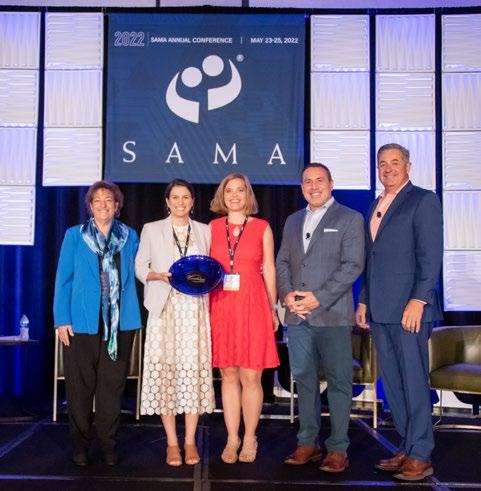
Their approach proved so effective that AVI-SPL has expanded their SAM program within their existing customer set and lever aged their SAM program to win new customers with whom they had never done business.
Many of us, myself included, think that you must start as a vendor in the eyes of the customer and toil for years to achieve the privileged status of becoming a trusted advisor in the eyes of the customer. AVI-SPL has shown that it is possible to start as a trusted advisor with a newly acquired customer and stay there.
So, what did AVI-SPL do for their SAM teams to bring to each of their strategic accounts that made their SAM program value proposition so successful?
By programmatically equipping each SAM team with auto mation and centralized processes, they can keep each SAM team and the whole of AVI-SPL’s extended business focused on fulfilling the promise of being a trusted advisor to each customer. This started with in-depth mapping of the customer journey, which then led to identifying key points of friction that negatively impacted the customer, thus causing the SAM team to spend an inordinate amount of time reactively addressing issues instead
of implementing, refining, and improving enhanced customer experiences. This gave the SAM team more time and bandwidth to do things right and look for new opportunities to improve the customer experience — a win-win for everyone involved.
As a result of this focus, here are some specific enhancements that AVI-SPL made to their strategic account approach:
• They added a Global Program Manager role to each SAM team to unify the customer’s experience globally.
• They assigned a single senior engineer to each strategic account who knows the customer’s technology standards and insures they are applied globally on behalf of the customer.
• They created a new analytics dashboard that enables the SAM team and the customer to globally track progress.
It pays to proactively focus on continuous improvement of value creation processes. Giving each customer and SAM team the ability to see what each other is doing improves customer sat isfaction, increases employee satisfaction, and opens the doors to new avenues of value co-creation.
As you contemplate AVI-SPL’s approach, notice how they are getting strong support from their whole company. At this point, you might be wondering how AVI-SPL does this, as getting and sustaining internal alignment for strategic customers is always rated as the biggest obstacle a SAM team has to overcome. The answer is clear. The advancement and growth of their SAM pro gram is truly an organization-wide effort, starting at the very top.
Before the program even launched, it was first proposed by the senior leadership team and sponsored by AVI-SPL’s Board
of Directors. As the program grew, the Board and the entire executive team — includ ing the CEO, COO, CFO, EVP of Technology & Innovation, and EVP of Sales and Marketing — have remained actively involved in support ing the vision, growth, and resource development for the program.
Another new feature of AVI-SPL’s SAM “product” is a Customer Advisory Board (CAB), comprised of senior technology and employee experience leaders from some of the world’s largest companies across multiple industries. This forum allows these leaders to discuss issues like how to prepare for employees’ return to the office, how human behavior has changed as a result of the pandemic, and how will that affect them at work.
Each of their designated Global Accounts is invited to partici pate in this exclusive feature of board members to advise on stra tegic direction, peer-to-peer learning, and community building.

If you want to become a trusted advisor to your strategic account, you must be seen as one from your customer’s C-suite. A CAB approach makes this happen at scale. Unsurprisingly, AVI-SPL recognized this and is making it happen.
The key point to highlight is that the C-suite members don’t just sponsor the program, they personally engage in it. Decisions like funding and sponsoring the new analytics dashboard, add ing centralized engineering resources to their SAM Center of Excellence, and meeting directly with executives at Customer Advisory Boards require executive commitment, buy-in, money, and time. When internal employees see examples and hear stories of executive leadership actively making a difference with their customers, support for the SAM program increases. Everyone wants to play on a winning team.
As for third-party validation, AVI-SPL provided plenty of it from the leadership ranks of their strategic accounts. Several well-known global firms praised them for their efforts to bring the community into consideration with the Customer Advisory Board and cited specific examples of exemplary customer-centric behavior.
“I just wanted to send a quick email to make sure you knew how incredible the support was from your team on our vir tual Annual Stockholder Meeting on Monday,” said one happy
customer. “They executed a flawless meeting for us no matter how complex we made it and how many curve balls we threw their way. We could not have pulled it off without their diligence and dedication. So, a big thank you to you and your entire team for their efforts and support.”
In addition, AVI-SPL hired Forrester Research to help quan tify the total economic impact of the AVI-SPL Digital Workspace Solutions for their strategic customers. Some key findings include:
• Total cost of ownership (TCO) savings of $8.4 million (present value) up 52% from $5.5 million.
• Productivity increase of $12.4 million (present value) up 4% from $11.9 million at program launch.
• Time savings for the average client of 141,500 hours per year because meetings start on time and conference technology is more intuitive (up from 122,500 hours at program launch).
Their impressive list of findings goes on, but you get the idea. With glowing third-party validation like this, it is no wonder that AVI-SPL’s customers and SAMA’s independent judges rated their SAM program so highly.
From launching their SAM program late in 2016 to winning the SAMA Excellence Award in their first year of eligibility, AVISPL’s ascendance has been impressive. Here are some standout examples of lessons they learned:
• Determine how to make the customer impacts of your program tangible.
• Ensure there are key measurements which track your invest ment in building the program. If anyone questions it, you can prove that the true business value/returns are there, and they will not get distracted by the costs.
Continually ask yourself questions like, “How do we make that promise to customers real?” or “How can we give them some thing distinct to point to as a difference maker?”
To sum this point up, AVI-SPL highly recommends “taking the time to understand the product management process and understand how you can implement its principles to develop your program. Doing so will help your team innovate in meaningful ways with your customer as your program grows and matures.”
Achieving excellence in strategic account management is the result of putting the customer at the center of your strategy. Continuously finding new ways to deliver value, and transpar ently and thoroughly quantifying the investment and the return on investment for each customer and the program, as a whole, makes a world of difference. Doing so takes 100% commitment from everyone in your company, including your board. From there, it becomes the gift of growth, innovation, and pride in a job well done. Congratulations, AVI-SPL! We cannot wait to see what you think of next. n


SAMA’s Certified Strategic Account Manager (CSAM) program guides participants through a comprehensive certification journey that assesses competencies, develops skills, enables coaching, and ensures adoption of improved behaviors. SAMA provides a technology tool that was designed to track the inputs of the journey and enables a standardized coaching and assessment process.

For more information, email certification@strategicaccounts.org.
SAMA Competency Assessment & SAM Playbook: Foundational Skills for Driving Superior Customer Results
“Core Four” workshops

Coaching & assessment of mastery of steps 1-4 of SAM process
SAM electives & ongoing account business case project
SAMA assessment & current account business case for SAM certification
SAMA engages with the industry’s top providers of training and uses technology designed specifically for the role of the SAM and the entire SAM process.

Nothing is as constant as change, and stra tegic account management is not exempt from constant evolution. But the last two and a half years of global pandemic and its aftermath have resulted in unprecedented, significant, and last ing change. Supply chain disruption, acceler ated digitization, hybrid customer interactions, and a greater focus on economic value on both the seller and buyer sides are just a few of these developments. Strategic account managers, as guardians of high-value business relationships, have been busy reallocating resources to prove delivery reliability and true partnership in times of crisis. At the same time, many customers were forced (and also had the time) to rethink and adapt their business models and value chains in pursuit of sustainability and competitiveness in the emerging “new normal."
With this in mind, how can strategic account managers continue to cre ate value and growth, both for their company and for their customers? What value should be prioritized; what activities should be practiced? These are questions frequently asked today by executives look ing to future-proof their sales organizations. Five
business-to-business companies joined forces in Spring 2021 to explore this shift and find answers to transform their strategic customer management practices. One result of the con sortium's work is the Value Creation Compass.

The “Transforming Sales for Value Creation” research consortium is made up of five Swiss sales organizations from the following compa nies: Elektro-Material (part of the Rexel Group), Lohmann & Rauscher, Mapei, Pistor, and Siga. The companies are active in production and/or sales and all offer customer solutions or product and service combinations that require intensive consulting. Participants include sales directors who lead between 30 and 250 B2B salespeople and strategic account managers.
Through workshops, case analysis, and expert panels, the consortium explored how participating companies should prepare their strategic account management practices and roles for future value creation. The group took an outside-in perspective of value creation. First, they examined potentially relevant value dimen sions in business relationships. This resulted in a differentiated description of the value dimen sions relevant to buying companies and their stakeholders in the decision-making process. Second, the consortium examined activities that promote the creation of such value. Looking at job titles today, many strategic account manag ers are “advisors” or “consultants.” But what
does that mean from a value management perspective? What exactly should a strategic account manager do? Consortium discussions emphasized that value-creation activities go beyond the sales process and encompass the entire customer interac tion. Value creation often occurs after the sale is closed, when something is developed, used, or consumed.
The result of the work of this consortium is the “Value Creation Compass,” which consists of three elements. The first two elements of the compass distinguish potentially relevant value dimensions at both the organizational and individual levels. Simply put: these are the dimensions that should be explored for new value creation in each business relationship. The third element dissects the value creator’s activities in a comprehensive way beyond the point of “closing the deal” in business interactions. It’s a comprehensive description of the activities that have proven essential to creating new value. In this way, the Value Creation Compass serves as a pragmatic tool for businesses and strategic account managers alike to unlock new value in a consistent and repeated manner.
The questions “What value is important to a particular customer?” and “How can we be more business relevant and make the customer more competitive than any other supplier?” are the start ing point for new value creation. The questions are simple and difficult to answer at the same time, and more than one strategic account manager skips over them — subconsciously or consciously —because they supposedly “know what the cus tomer wants and needs.” Therefore, the consortium spent a great deal of time researching and syn thesizing all the potentially relevant dimensions of value, drawing on existing research and analyzing a variety of business relationships.
The example of a medical products company that produces, trades, distributes, and supplies hospitals is emblematic of the shift toward comprehensive value creation. In the past, success was based on a broad product range with high availability and cor responding logistical services to increase efficiency (e.g., digital order connection, goods inspection), naturally at prices in line with the market. This is value-adding, but not substantial and sustainable, as other companies are doing the same. Similarly, key opinion leaders are no longer the decision mak ers and, thus, are the sought-after contacts for strategic account managers. Today, strategic account managers are creating new value by, for example, advising multidisciplinary teams on how to optimize their resource management in specific departments such as intensive care units, and by providing digital tools to help identify and claim lost reimbursements due to errors in cost allocation at the time of patient care.
In total, nine organizational value dimensions were found to be relevant and pronounced at the same time. These include “hygiene” factors such as prices, standards, and quality. More farreaching value dimensions relate to effectiveness (e.g., optimizing the customer’s cost base or improving revenues) and efficiency with, for example, time and effort reduction on the customer side. Access and availability will continue to play a central role as there is no end in sight to supply chain disruptions due to ongoing health and political crises. In the context of digitalization and com plex, intertwined production and supply processes, operational values such as connectivity and integration are gaining impor tance. Collaborative innovation is undoubtedly a strategic value for customers who focus on their core competencies and expect their suppliers to fill the gap. The last two dimensions of value reflect the importance placed on end-user experience, because if the customer’s customers are satisfied and stay satisfied, the
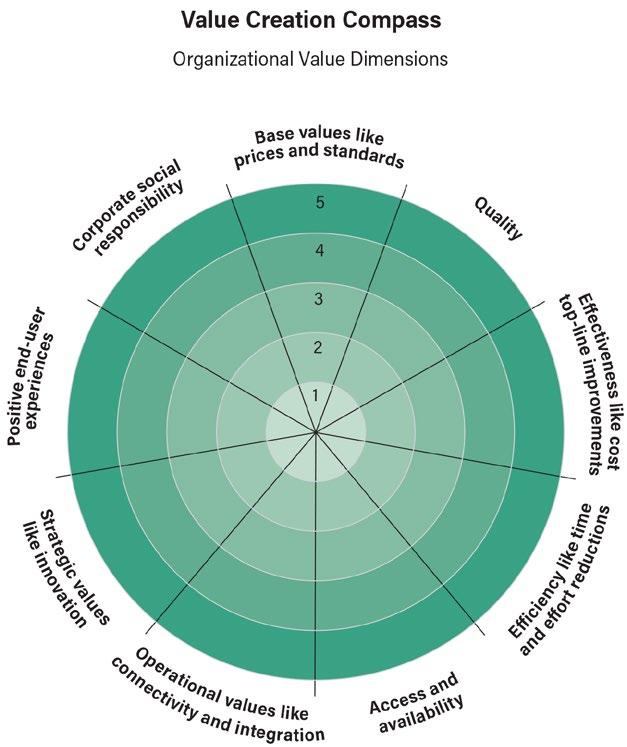
business relationship benefits as well. Corporate social responsibility has been promoted through ESG, which is considered in the decision-making of buyers, end users, and investors alike.
Should strategic account managers track all dimensions of value for a given business relation ship? The answer based on the work of the con sortium is no, because not every dimension may be relevant to the customer or desirable from the supplier’s perspective. However, the consortium's findings suggest that at least three relevant dimen sions — ideally higher-level dimensions — should be identified and explored in any high-value business relationship. The higher-level value dimensions form the basis for significant relevance and competitive differentiation.
It is widely known and accepted that people buy, not organizations. Concepts such as decision-making units and stakeholder management are applied by strategic account managers to better understand and influence decision-making and buying processes. Interestingly, the tactics derived from these are about personal relationships and relationship management. The consortium wanted to dig deeper to explore potentially relevant individual value drivers. Implicitly or explic itly, individuals ask the question, “What’s in it for me?” Business relationships and consortium member cases were analyzed to understand the motivations and individual value dimensions that influence decision making. The results are both intuitive and surprising. They are surprising because strategic account man agers were not aware of the many dimensions they can use in face-to-face interactions, not to charm or persuade, but to create relevant individual value in addition to business value. This applies not only to stakeholders on the buy side, but also to individuals within their own company, as the following example shows. In one company, the strategic account managers had been trying to build bridges to their research and development department for some time. They lacked priority lab resources and timely access to commercially relevant expertise. The turning point came when the chief technology officer was invited to strategic account advi sory boards, which proved to be important personal networking and branding opportunities for him.
People tend to work with people they like and enjoy working with. Therefore, empathic collaboration is one of the individual value dimensions, and most strategic account managers use this dimension. Ease of collaboration, complexity reduction, and problem solving reflect today’s work environment. Stakeholders
on the procurement side face increasing complexity and time pressure. Accordingly, they prefer business partners who not only help avoid or at least solve problems, but also support decisionmaking and provide certainty. The larger the buying organization, the more difficult it can be to build consensus and push through the desired decision. Therefore, another individual value that has emerged is helping to create acceptance among stakeholders within the buying organization. The remaining three value dimen sions are personal knowledge gain, personal networking, and personal visibility and brand. Social networks such as LinkedIn are a vivid example of how people cherish their personal brand as part of their career management.
Organizational or individual value dimensions — which are more relevant? The consortium further elaborated on this ques tion. Some members argued for a much stronger focus on indi vidual value dimensions. Others countered that compliance regu lations and rotating purchasing personnel would stand in the way of such an approach. Overall, they argued that there is greater potential for better understanding and leveraging individual value dimensions, which in turn will strengthen business relationships and outcomes.

A comprehensive view of organizational and individual value dimensions is one step toward creating new value. The other relates to specific activities that strategic account managers undertake to achieve that value. Some of the companies in the consortium organize tasks along their sales funnel, which focuses on closing the deal. Others have established a more customercentric buying journey. But even such buyer journeys often culminate around conver sion, with loyalty and repeat purchases as the final loop. The consortium’s work began with a blank sheet, focusing on recurring, collaborative value creation. They identi fied five distinct areas of activity, which are captured in the Value Creation Compass.

Value exploration is the first area of activity. As mentioned earlier, the question of “value” is central. Before bringing new value opportunities to the table, a thorough understanding of the context-specific eco system and value perceptions needs to be established. Often, value is not discussed in a vacuum. Existing approaches, solutions, and the logic behind them must be chal lenged and positively reshaped. This is an activity that goes beyond understanding an existing set of value attributes and smartly pitching them to potential buyers.
The value specification is the sub sequent scope of activity. A mutually agreed upon framework for value creation ensures that both parties have the same goal. Strategic account managers have the internal mandate and authority to create new value, but customers must be willing to make the same level of commitment. Consortium discussions revealed that quantifying and pricing customer-specific value propositions is a task that not all strategic account managers do sufficiently well. For example, strategic account man agers in one company were accustomed to including services such as electronic data interface programming in their offerings at no additional cost and focused on productbased costing.
Strategic account managers often play a central role in value realization . Agreeing on a common value idea is one thing; implementing it is another. Creating the necessary alignment, providing resources, and facilitating interactions with stakehold ers are some of the tasks at the forefront. Because value proposi tions often involve customized products and services, value is often realized not in the exchange of those goods and services, but in their actual use. Strategic account managers help custom ers maximize value-in-use and design positive experiences.
The next two areas, value distribution and value destruc tion , may sound unfamiliar or even counterintuitive. If strategic account managers are charged with attracting, retaining, and growing high-value business relationships, they should strive for repeated value creation. Both parties will strive for repeated value creation together only if they perceive the business relationship to be trustworthy and fair. Therefore, the value created as a result of each value creation opportunity should be measured, documented, demonstrated, and fairly shared. In business rela tionships, not only is value created, but value may be withheld from a partner or value may actually be destroyed. This can hap pen because of value conflicts, opportunistic behavior, or simply inadequacies in value creation. Strategic account managers may not be able to resolve or de-escalate such situations on their own, but they can identify such cases and initiate remedial action.
As the name implies, the Value Creation Compass helps navi gate. Still, a case-by-case decision is required. It is not a blueprint, because there is no one perfect path to value creation in a particular business context. So, what are the ways to use it? Let us look at three examples from the consortium.
One application of the Value Creation Compass relates to existing business relationships. Drawing on the compass, sev eral members of the consortium interviewed key stakeholders on the buy side, as well as colleagues within their own organiza tion who are relevant to value creation. The result is a thorough outside-in and inside-out comparison of value perceptions and correspondingly important value creation activities. Similarly, nuances between the various sales, marketing, and business development roles can be uncovered. The results have been used proactively to strengthen and improve strategic business relationships. For example, a significant difference in “strategic value” was used to define an exploratory workshop to better understand the two companies’ strategic thrusts, initiatives, and potential synergies.
One consortium member also applied the Value Creation Compass to potential customers that have been lost that or are on the target list without any previous collaboration. The
organizational and individual value dimensions were used in standardized interviews to uncover reasons for not buying and to better understand how competitors’ value is perceived compared to the company’s own value. The intent was not to gain insights to attract as many non-customers as possible, but to know where resources should and should not be invested based on whether they fit or not. Similarly, marketing gained important insights to sharpen value communications, which often face the challenge of communicating too many potential value attributes.
The third use case relates to training and development. Some consortium members use the Value Creation Compass to create a personal “moment of truth” for their strategic account manag ers. The intent: to clarify what the value creation mission means for future success and where one personally stands today. The first step is to create the right mindset and readiness to improve one’s value creation capabilities. Other companies use the Value Creation Compass to classify sales roles and plan appropriate development measures. In many sales organizations, new, addi tional roles are emerging, such as customer success manager. For a seamless customer experience, and efficient and effective value-creation management, these roles need to be aligned. The Value Creation Compass can help identify who does what in business relationships and interactions.
Most sales leaders will claim that value creation is at the top of their agenda and that their strategic account managers are charged with creating value with customers. But for how many is value creation still a “black box,” and selling value to customers rather than creating new value with customers the routine? A recent quote from a chief commercial officer is a case in point: “Customer centricity means providing customers with what they need, not what they want. This requires a thorough understand ing of their value drivers. Sales does not provide these insights.” Who, if not strategic account managers, should be at the forefront as value creators?
The transformation accelerated by the pandemic has changed all sales roles, and the role of the strategic account manager must also reflect and recalibrate. If not, the oft-cited article “The Death of a (B2B) Salesman” (Forrester, 2017) could be followed by “The Death of the Strategic Account Manager.” The Value Creation Compass helps to establish a fair view of the current state of value creation and to unlock new value creation opportunities. n
Dr. Axel Thoma is lecturer at the University of St. Gallen, and partner at B2B Value Group AG and Die Botschafter Kommunikationsagentur AG. He collaborates with organizations to accelerate value creation with high-value customers. You can contact him on LinkedIn at https://www.linkedin.com/ in/axelthoma

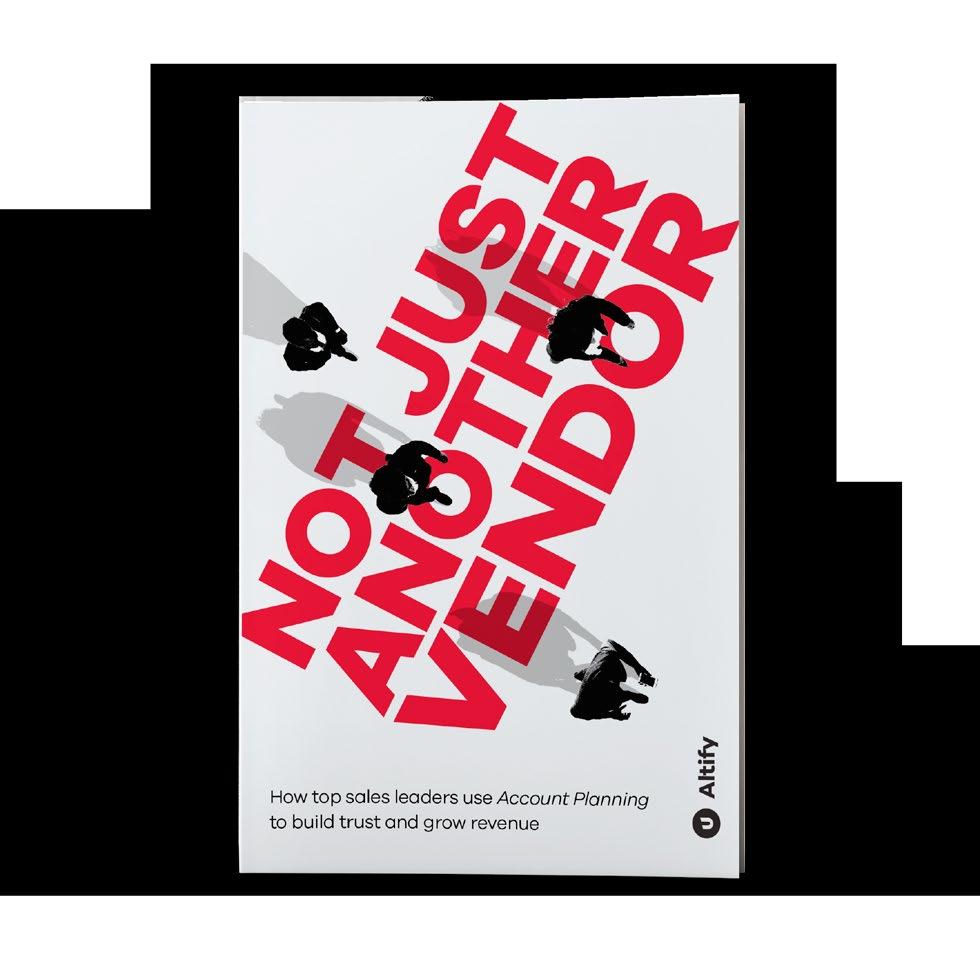
In the core composites business, Owens Corning (OC) plays in very mature market spac es. In many cases, we developed several of our end-use markets (e.g., fiberglass boats, tub & shower, automotive body panels) together with our customers from 50-plus years ago. But over time, lower-cost competitors slowly eroded our market share as well as our value proposition. We knew we needed to make intentional stra tegic choices in order to stay competitive in an ever-changing marketplace.
During a strategic growth ideation session in late 2019, our leadership team defined our win ning aspiration to be “the partner of choice for customers who rely on us to deliver productivity and growth in ways others cannot.” We also real ized we weren’t allocating resources appropri ately to deliver on this promise considering 80% of our standard gross margin comes from about 20 customers. As an outcome of the session, we decided to narrow our focus and leverage Key Account Management (KAM) as a key capability to drive the growth strategy.
While the business already had Key Account Managers with defined account plans, the plans were updated in PowerPoint only once per year and hardly referenced, both internally and with the customer. Furthermore, attempts at a for mal KAM process were done largely ad hoc, with minimal oversight and leadership support, which left us struggling to align and mobilize cross-functional teams to deliver customer value. We also had no formal method to mea sure Customer Expected Value (CEV) in order to
create and capture value in a quantifiable way.
As a result, Account Managers didn’t have much leverage when it came time to negotiate contract renewals with these accounts. Thus, the idea for developing a formal Key Account Management (KAM) Operating Model and Management System was born.

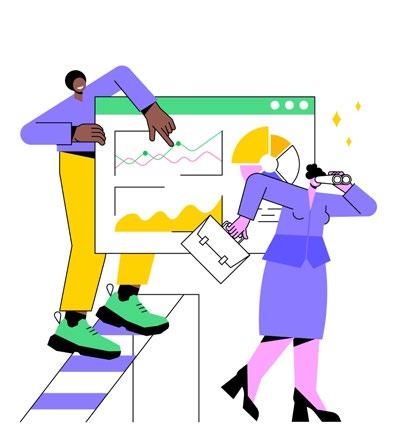
Recognizing the business challenges of quantifying customer value and executing our key account plans, the General Manager of the Americas, the Director of Sales, and the Director of Marketing collaborated to design a formal Key Account Management (KAM) Operating Model and Management System, including a new hybrid Sales & Marketing Program Manager role to establish and run the overall program.
The KAM program is governed by our Composites Leadership Team and sponsored by our Chief Growth Officer. Our Extended Team is made up of leaders from Supply Chain, Customer Service, Technical Sales, Marketing, IT, R&D, Legal, and Operations.
Each Key Account is supported by a crossfunctional team to help identify and create dif ferential value based on the customer’s goals and objectives. Typically, the core team is comprised of Technical Sales, Supply Chain/Customer Service, and Product Management, and we pull in other resources such as R&D, IT, and Operations as needed.
Due to the success of the initial KAM program
in North America, we have since scaled the KAM program to other regions including South America, Europe, and India.
Our KAM program is made up of five key elements: Culture, Talent, Segmentation, Operating Model, and Management Systems.
The first two represent the “Who” in putting the customer at the center of everything we do and ensuring we have the right talent in key roles. The last three represent the “How” in making strategic choices by segmenting our customers, operating with customer centricity, and measuring results.
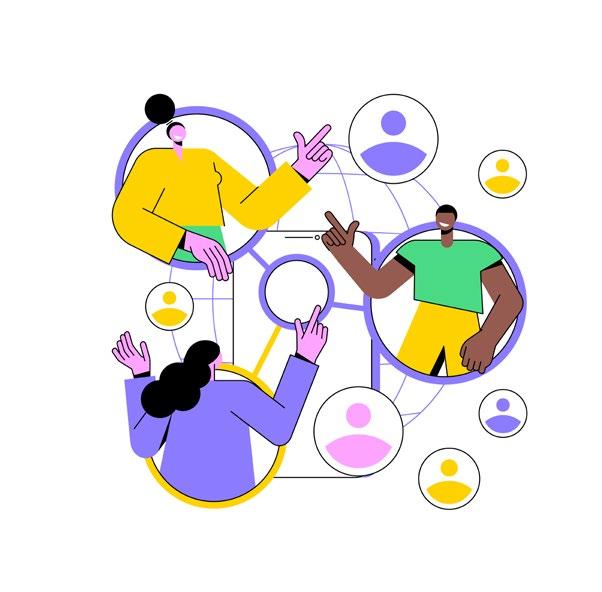
In the words of our Director of Sales, we “drove a cultural trans formation on how to operate with customer centricity.”
We started our journey with a Road Show to introduce the “Why” behind our strategy, as well as the KAM Operating Model, to various functional teams in order to obtain buy-in early in the process, manage change, and align expectations. As part of this, we published a “cheat sheet” of our newly minted “Key Growth Accounts” to signal a behavior change in giving these custom ers extra care and attention, as well as a series of “baseball cards” or Key Account plans-on-a-page to educate the teams and ground them in the business realities of our top growth custom ers. Today, more than 100 OC employees are actively engaged with customers across multiple functions, including Marketing, Technical Support, Business Development, Supply Chain, R&D, IT, Operations, HR, Sourcing, Sustainability, and more!
To set a baseline, we utilized the SAMA 360 Competency Assessment tool for 32 of our KAMs to assess our strengths and opportunity areas when compared to industry benchmarks. With that output, we worked with SAMA partners to build and deploy a formal training and development curriculum to address our common opportunity areas. We are also integrating other SAMA content, like the Academy sessions and Resource Library, into Individual Development Plans to help build capabilities across our team.
Building upon our existing needs-based segmentation, we further segmented our customers into growth vs. maintenance accounts based on current financials and projected market growth (market attractiveness), as well as willingness to partner (ability to win). Through this process we identified 20 accounts — 18 direct and two distribution partners — where we thought we could create differential value and get paid our fair share of that value.
As a team, we review this list twice per year using a “Fit Scorecard” in Valkre to help quantify who should remain on the list. Typically, we swap out two to three accounts based on leading and lagging indicators and have tried six-month pilots to see if we can move the needle toward becoming a trusted advisor.
While we knew what it meant to be customer-centric, we didn’t know what it looked like on a day-to-day basis. We established a Core Team that meets weekly, an Extended Team that meets monthly, and a Leadership Steering Team that reviews results quarterly. Each account team meets for one hour every two weeks to review the value creation plan and to discuss project status, and the next milestone, as well as any barriers or issues that need to be escalated to the Core Team in order to maintain momentum. After the first year, we reduced the cadence of these meetings, since the Operating Model became more efficient and part of our standard work practices without requiring as much oversight.
We knew this journey would be difficult using a massive Excel spreadsheet, so we invested in Valkre as the technology enabler of our KAM process. The account teams update project status, Customer Expected Value (CEV), the Fit scorecard, and other functionality as a real-time digital version of the account plans. The Program Manager then shares regular reports on portfolio health and leading indicators, while our Finance team tracks
lagging indicators to assess the business impact of our efforts. By linking value creation to value capture, the Core and Extended Teams can then make data-driven adjustments to at-risk projects, priorities, and resource allocations when needed.

We also utilized the SAMA Program Assessment tool to assess our strengths and opportunity areas when compared to industry benchmarks. As a result, we are currently addressing our execu tive visibility, compensation plans, and value-creation plans for the maximum business impact.
• Leading Indicators / Value Creation: Customer Expected Value (CEV) and Portfolio Health (e.g., at-risk projects, completion rate, strategic vs. tactical, etc.). We also measure Functional Inclusion or “diamond model” relationships between our team and the customer.
Lagging Indicators / Value Capture: Above-market growth, customer share of wallet, incremental price/volume/mix (PVM), and standard gross margin.
Through an annual Customer Relationship Survey, the busi ness achieved a record Net Promoter Score (NPS) score of 86, marking a 28-point increase from the prior year. While this isn’t all attributed to the KAM program, it’s certainly an indication that our customers are appreciating the difference in how we’re engaging them.
Qualitatively, our customers have noticed a change in how we’re creating value for them, and as a result, they’re engaging us in different ways. Below are a few examples of feedback we’ve received from customers:
“The level of engagement from the OC team has been incredible on projects that are relevant and meaningful to our growth strat egies. In particular, the advanced modeling work to optimize the design of our composite manhole cover will help us win more jobs among fierce competition.” - General Manager, Direct Customer #1.
• “I wanted to express my thanks to the Owens Corning team. Your willingness to support our project with your time and expertise is exemplary and is much appreciated…your respon siveness and communication were amazing! We consider Owens Corning to be a key supplier and partner in our quest to bring high-performance products to our customers, and we look forward to working with all of you in the years ahead.”
- President and CEO, Direct Customer #2.
• “We’ve seen the teams working really well together, and we have felt that there is a very engaged group at OC that is driving
to find any and all solutions that will help position us to avoid any customer let-downs. Please ask the team to keep the great communication coming.” - VP of Marketing, Direct Customer #3.
By linking the customer delivered value from our KAM program to the contract negotiation process, our Commercial team felt more confident in asking for a greater share of wallet and/or higher price premiums because we felt we had earned the right to ask for it.
In just one year after implementing a formal Key Account Management program, the North American Composites business:
• Gained four points of market share.
Increased 20% in volume.
• Increased 31% in revenue.
• Increased 75% in standard gross margin vs. prior year, which was more than half of our three-year growth goal.
As we continue to evolve our KAM approach, we are starting to openly ask our customers if they’re willing to reward us for value even before we embark on projects with them to further de-risk and ensure we’re making the right strategic choices to grow our businesses together.
We proved that a very mature, 50-plus-year-old business can grow organically with existing customers, even when lower-cost competitors can supply similar products.
We can create differential customer value beyond our products. While product innovation is still a core competency for us, we discovered we can surprise and delight our customers with other sources of value such as enhanced service platforms, market ing support, productivity improvements, sustainability initiatives, Human Resources and Procurement benchmarking, and more.
In short, we win when our customers are more efficient and profitable. If we understand how those customers make money, we can help them grow, improve their productivity, and/or decrease their costs. As we deliver on this commitment to customers, they reward us with a higher share of their business at a price premium and earn loyalty over other suppliers. We’ve also discovered that customers openly share information when you pursue shared goals and develop “diamond model” relationships.
Many functional team members were hungry to get customer exposure, and our formal KAM program provided the forum to do that in a relevant and meaningful way. Before, our Sales team would begrudgingly take functional team members to a customer for a standard facility tour and general business overview. Now, the team members are deeply engaged with customer contacts on value-creation projects, so they can connect with purpose and provide greater value.
While it’s tough to juggle both the near-term and long-term growth goals of the business, we found that a strong partner ship between the Sales & Marketing functions provides an ideal environment for both challenge and support. For example, it’s
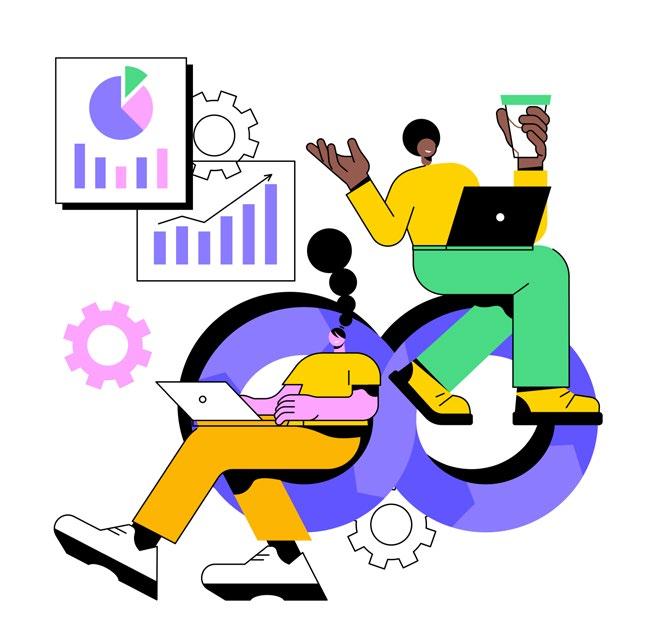
one thing to throw stones at an account plan from an academic standpoint, and it’s quite another when both teams are working together to build and execute account plans, so they have a sense of shared ownership and accountability. We’ve learned that KAM is not a sales process; it’s a business model. And it’s not purely KAM-led; it’s a team sport. As such, you need support from mul tiple functions with a strong Core Team as led by Sales, Marketing, and General Management.
Strong leadership endorsement drives behavioral change. And not just lip service. We benefited from highly engaged leaders who saw KAM as critical to our success in executing our growth strategy, and repeatedly held their teams accountable for focused execution.
KAM success is dependent on both internal, organizational, and customer readiness. Value co-creation is a two-way street, so regularly review your account list (say twice per year) to ensure you’re partnering with the right customers. If they’re not willing to engage now, they may be ready in the future.
A structured operating model with cross-functional team par ticipation drives execution with speed and scale. We tried putting the ownership on the Key Account Manager to find resources needed to execute their account plans on their own, and it fell flat. We needed a formal structure with a dedicated resource to herd the proverbial cats, escalate issues, measure success, and optimize the process as we went.
Program management allows for a portfolio approach to leverage resources across accounts. It’s terribly inefficient for each Key Account Manager to create customer value from scratch, when we can scale differential value proposi tions across multiple customers who have similar needs with minimal customization. We moved much faster and efficiently with a centralized resource to align with functional leaders on a portfolio of programs vs. individual value creation projects.
Focusing on value co-creation helps shift the conversa tion away from price as well as the various uncertainties in today’s marketplace. While we can’t control challenges like COVID-19, supply chain bottlenecks, trade tariffs, and sustainability challenges, we can control how we engage our customers to create differential value and stimulate growth in these uncertain times. n
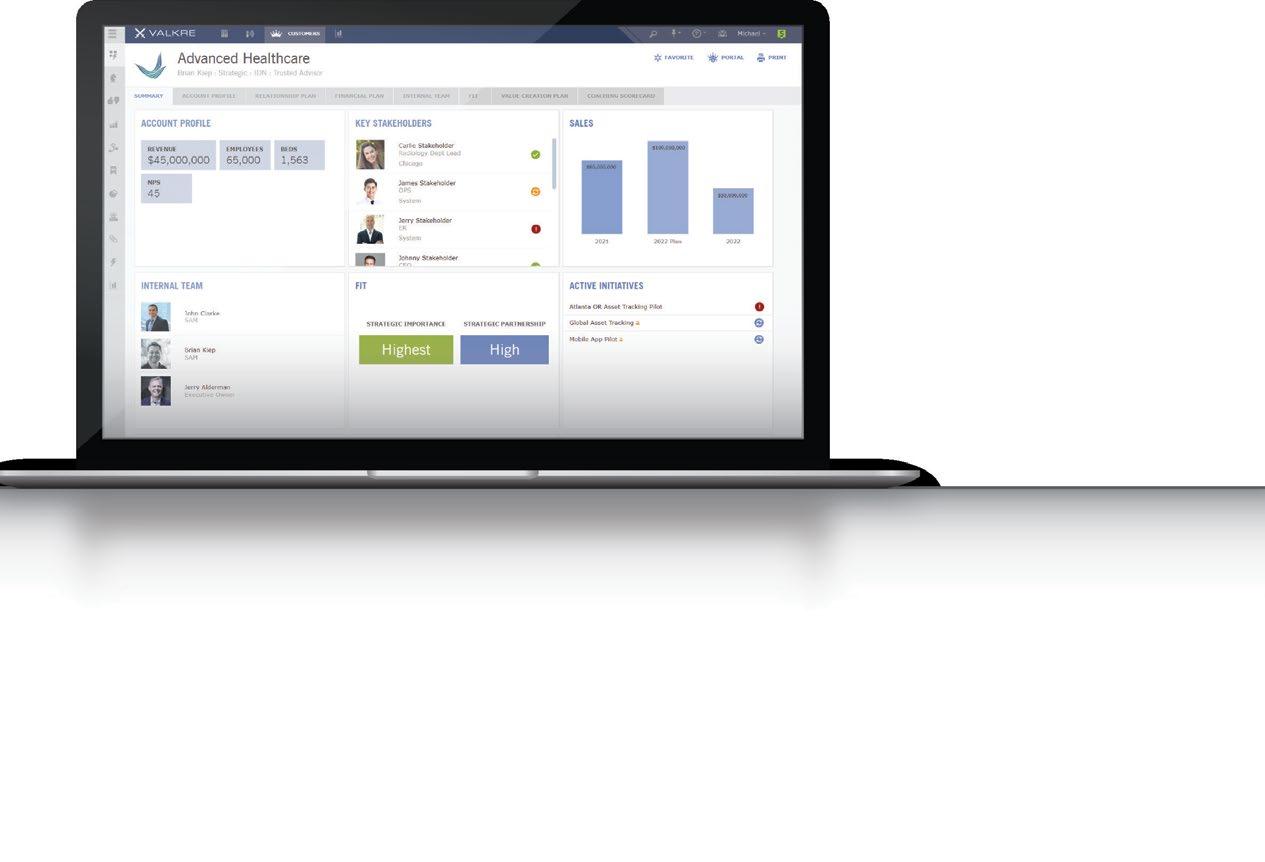
This article is based on a panel discussion from the 2021 SAMA Annual Conference. The session was moderated by Mike Moorman, SAMA Board Member and SAM Practice Area Leader, ZS. Panelists were Hajo Rapp, SVP Strategic Account Management & Sales Excellence, TÜV SÜD AG, and Teresa Cook, Vice President Strategy & Transformation, Integrated Accounts, IBM. Panelists’ remarks have been lightly edited for clarity and length.
To determine the best design for your strategic account man agement program, leaders must consider an ever-widening set of organizational design decisions. When focusing on the SAM
role itself, there are several considerations when deciding how the SAM is expected to represent the company and engage with the customer. At the same time, it is best to think of designing your organization like the way you would build a sports franchise. Rather than focus solely on the individual SAM role, you must comprehensively consider the other customer-facing roles and cross-functional teams that surround the SAM or KAM. This article will offer a general framework for designing an organiza tional model tailored to the company’s needs and objectives, as well as examples of how two dramatically different companies, TÜV SÜD AG and IBM, have applied these principles.
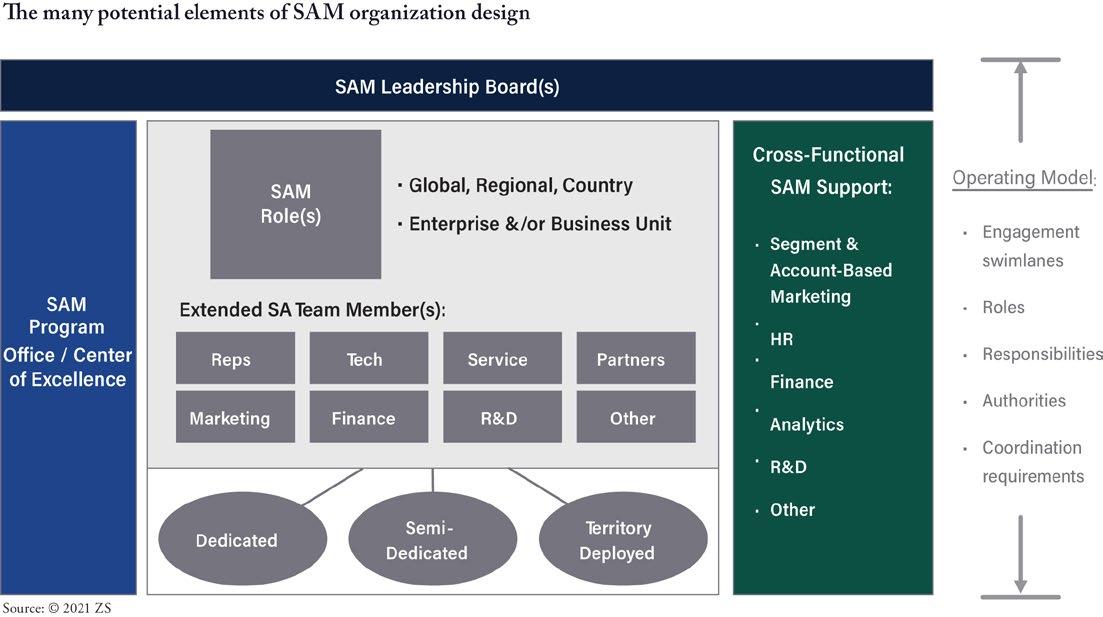
There are five key elements of the SAM program design that need to be considered. These elements include the SAM leader ship board(s), extended strategic account team members, the SAM program office/center of excellence, the cross-functional support teams and, of course, the SAM role itself. It is important to remember that whereas the strategic account manager plays an important role within organizations, strategic account man agement is more than just a role. As Moorman stated: “SAM is a cross-functional, organization-wide business strategy.”
As you consider how to design your organization, the first question to ask is how you are defining the SAM role. Says Moorman: “There is no universal naming convention for SAMs, and a multitude of role design options are possible. Form must follow function.”
You’ll hear an array of SAM-related titles from one organization to the next, including strategic account manager, key account manager, global account manager, client director, enterprise account manager, and many others, with varying role descrip tions for any one title. There is no one model that is right for all organizations. In general, SAM roles can be specialized by account type, portfolio responsibility, engagement activities, or
across a broad spectrum of strategic and non-strategic accounts. Another consideration is whether to include an executive spon sor, and if so, for which accounts. The executive sponsor serves as a deeply embedded team member with real commitments, not just a sounding board or steering committee member.
The SAM program office (or center of excellence) plays a central role in ensuring the company brings the best practices to strategic account management across the organization and that internal functions provide the necessary support required for high levels of SAM impact. Composition is cross-functional, with representation from every internal function critical to SAM success. Design varies from fully centralized to centrally orches trated with sub-teams sitting in individual business units or geographies.
You should also consider the design of your cross-functional support teams and whether you need to reorganize or change roles and responsibilities across important functions. You may ask: Do we need strategic account-focused marketing roles, such as segment marketers or account-based marketers? Does human resources or training need to change its organizational construct to better support SAM competency and learning and
Moorman. “Form
geography. This leads to a diverse range of possible models: SAMs that are specialized by industry or by “tier” of strategic accounts, SAMs that represent the full enterprise versus select lines of business, SAMs that own the full sales process versus opportunity identification and then hand-off to specialists, SAMs that have global versus regional responsibility, and many other permutations, including the possibility of multiple types within a single company. The SAM role design then affects other elements of organization design.
When you consider your customer-facing account team, it’s often cross-functional and composed of different roles and responsibilities depending on the organization. Account team members may include sales reps, technical specialists, market ing, R&D, finance, customer service, or others. Account team members can be fully dedicated to a single strategic account, assigned to multiple strategic accounts, or generally deployed
development? Does sales operations need to create analytics or reporting roles focused specifically on strategic accounts? Should the customer-service function have teams dedicated specifically to strategic accounts?
Some organizations also establish leadership boards, which comprise a group of senior executives who collectively own the strategy and accountability for organizational SAM success. This ensures strong executive engagement to drive the organizationwide alignment, commitment, and resources necessary for SAM to succeed.
Finally, it’s critical to consider the underlying specifics of your customer-facing team and internal cross-functional operating model when designing the above five elements of your SAM organization. Role clarity and internal alignment are two of the most important success factors with SAM. You can ask:
“There is no universal naming convention for SAMs, and a multitude of role design options are possible,” says
must follow function.”
• What are the specific roles, responsibilities, and authorities of each member of the customer-facing account team at each stage of the customer engagement process?
• Who is the primary point of contact for each type of decision maker, and what are the coordination expectations?
• What are the internal touch points, requirements, and expecta tions between account teams and internal functions?
• Who internally has which roles and responsibilities for sup porting SAM?
Returning to the SAM role as part of the SAM team and organi zation design, there are four dimensions around which you may design the role.
1. Account type. Specializing the SAM role based on indus try is a common form of account type specialization. You may also consider other account type dimensions, including global versus regional, existing relationship versus prospect, ultra-high potential versus high potential, and other account type variations specific to your situation.
2. Portfolio scope. You may also choose to differentiate SAMs according to their product responsibilities. This may be the enterprise-wide portfolio, the portfolio of a specific business unit (BU) or line of business, or other variations. In larger compa nies, organizations may have one SAM role with enterprise-wide responsibility for the full portfolio working in combination with other SAM roles that focus on particular business units or lines of business.
3. Engagement activity. You can design the SAM role around the activity or stages of the customer engagement process. For instance, in some organizations SAMs are responsible for every aspect of the customer engagement process, while in others they are responsible for opportu nity identification before handing off to sales specialists who co-lead or lead the selling process from that point forward.
4. Geography. Geographic scope for SAMs may be global, regional, country-based, or local, with the potential for combinations of SAMs with different geographic scopes sometimes collaborating on the same accounts.
These four dimensions lead to a multitude of ways to design the SAM role or roles within your organization. Your design decisions should be based on customer consider ations including needs, buying processes and preferences, partnering orientation, and potential, as well as your compa ny’s broader organization structure and strategic objectives.
To give some flavor to the diversity in strategic account man agement organization constructs, here are four examples of different organizational models in the marketplace.

SAM generalist. In this model, the SAM acts as a generalist. This model is common, especially in smaller organizations that do not have diverse product portfolios. In this model, SAMs own the sales process from end to end. For their assigned strategic accounts, they may have some form of a dotted-line coordination responsibility for, or oversight of, territory salespeople who are covering local entities of the account that may be geographically distant.
SAM specializing in select engagement phases. In this model, the SAM is a specialist rather than a generalist. The SAM focuses on the front end of the customer engagement process, around strategic planning and working with more senior execu tives and stakeholders on opportunity identification. As the SAM identifies opportunities, the SAM brings in various teams of sales specialists to help further build out opportunities and solutions.
Hybrid SAM. In this organizational model, the SAM owns selling responsibility for select products but brings in specialists to drive the selling process for other products. This is a hybrid of the first two models. SAMs have a dual responsibility. Like generalists, they have end-to-end sales responsibility for at least one of the company’s major product categories. Like engage ment process specialists, they engage and coordinate with sales specialists who lead the sales process for other products.
Enterprise and BU-specialized SAMs. This is also a hybrid model. Many large organizations are structured in this way, hav ing an enterprise SAM function working in concert with BU-level SAM functions.
Hajo Rapp describes TÜV SÜD as a “service company with a strong footprint in product business.” TÜV SÜD operates in several regional markets, with SAMs responsible for organizing business across different countries with highly country-specific regulations. Most of TÜV SÜD’s top customers buy from more than one division and coordinate their buying behavior. Based on that, TÜV SÜD sees clear economic advantages in having SAMs who can organize business with customers across BUs.
From 2012 to 2018, TÜV SÜD grew from 11 strategic accounts to more than 80. The company started with loosely connected account-management approaches within single divisions and regions. From 2012 until 2017, headquarters defined new roles and responsibilities for its first 11 accounts and account teams. Accounts focused on cross-divisional service offerings, and setup was unified on a corporate level. Sixty account managers
the customer. I don’t think so. The strategic account manager should know the crucial things about the account.”
• Key account managers , who are either divisional or regional. They may be members of the SAM team depending on the setup and buying behavior of the customer. They work hand in hand on the same account as the SAMs but as a team member at a more local level.
• Executive sponsors , who are responsible for escalating con tact with the customer and working internally to help the team understand the relevance of the customer, coach the SAM and use connections to eliminate internal hurdles.
• SAM VPs , who act as a supporting structure. At TÜV SÜD, the original 11 SAMs became the VPs and now coach the rest of their cohort on processes, structures, and incentives. While each SAM VP owns a region, they are responsible for bringing inbound and outbound business to each other’s regions.
At TÜV SÜD, account segmentation is based on customer structure and buying behavior. It comprises three segments, which dictate the combination of TÜV SÜD resources assigned to it. These segments are:
looked after these 80 accounts, some of whom were full-time and some semi-dedicated.
“Very often people think, ’O.K., you’ve started an account management program, and three years later it’s done,’” Rapp says, reflecting on the need for program evaluation. “That’s not the case.”
Rapp emphasizes that to have an effective sales organization, you need to have consistent and transparent roles across divi sions. At TÜV SÜD, these roles include:
• SAMs, who represents the organization in all sales/strategic activities. Responsibilities include analyzing and developing accounts, leading and motivating account teams, and manag ing executive relationships. The SAM is responsible for grow ing sales and improving customer satisfaction while avoiding becoming a “bottleneck.”
Says Rapp: “You often hear, especially from the C-level, that the strategic account manager should know everything about
• Small customers/flow business served by salespeople, some of whom are also in SAM teams.
• Regional/divisional accounts where KAMs work for one region or division. These accounts are served by crossdivisional managers and regional account teams. Each SAM manages, at most, five accounts.
• Strategic accounts managed by SAMs and executive spon sors. Executive sponsors globally steer the team, drive strate gies, and have contact with senior management at the cus tomer. These strategic account managers represent all five divisions at TÜV SÜD.
Says Rapp: “We believe that if an account manager has more than five accounts then they cannot know their customers or be a strategic developer of the business.”
Strategic accounts at TÜV SÜD are selected based on four key criteria. The company sources information on these criteria from existing relationships, information available on the internet
“The big accounts are not necessarily the most strategic,” says Rapp. “We select the ones that are interesting, growing, and profitable.”
for public companies, and benchmarking. Then, on a regular basis, the program office reviews existing accounts to determine if its roster needs to be adjusted.
Key criteria:
• Total relevant customer potential
º What is the size potential of the customer?
• Probability of success
º Are there synergies based on the customer’s buying behavior?
º Is there a cultural fit?
º Do we have a relevant value proposition?
• Fit with service portfolio in respective geographies
º Does the current service portfolio and regional setup fit the customer setup?
º Is there cross-selling potential across divisions and regions?
• Attractiveness of customer industry/fit with TÜV SÜD strategy
º How closely are customers connected to competitors?
º Is there a threat of substitutes?
º What is future market growth?
º Is there a fit with the overall strategic direction of the organization?
Cook describes IBM as being in the business of “strategic technology.” At its core, IBM’s go-to-market strategy centers around its clients’ and partners’ success. This evolved naturally and aligns with IBM’s open hybrid cloud platform and AI strategy.
Clients are at the center of the strategic account manage ment model design at IBM. Cook explains that “the amount of revenue does not make an account strategic. Instead, the synergy between the vendor and the client makes the account strategic.” She emphasizes the importance of five critical factors that have influenced the design of IBM’s model.
1. The relationship is vital to long-term business relations.
º Understand client’s broader set of decision makers and influencers.
º Know your client’s culture.
º Know client inside and out and understand pain points. “All customers are valuable,” Cook advises, “but not all custom ers can be a key account. As you decide which clients you really want to support and align your account management strategy to, you’ve got to think about the relationships.”
2. Leverage the ecosystem and make sure you match your clients’ partners.
º Embrace and understand all different partner communi ties, including Independent Software Vendors (ISVs), Global System Integrators (GSIs), and strategic alliances.
3. Wallet size and wallet share are important.
º Understand percentage of spend.
º Understand the sales cycle.
º Determine how much your client is prepared to invest in the relationship.
4. Perform comprehensive buying center analysis.
º Understand decision-making units within your client and who owns business buying decisions.
5. Keep the management system simple.
º If you don’t, you will become too internally focused and lose the connection to your client.
By clearly defining its mission and strategy, IBM was able to launch a simplified, modern go-to-market model. The model devel oped in response to customers’ needs. Says Cook: “They wanted the agile, collaborative, innovative, fun, teaming experiences, but with deep technical expertise.” The new IBM model offers:
• A single, consistent segmentation for all clients across soft ware, cloud, systems, and services
• More technical, hands-on and responsive service across all phases of the client journey
• A “garage” concept that brings the best of IBM and the client together in an orchestrated way to work through key problems
• Coverage for both integrated/global accounts and more local/ geography-based accounts
Cook says the model is designed to bring more technical expertise closer to the client. “It’s really technology focused and industry led,” she says. “It allows our clients to experience us in a highly engaging and experiential way, both digitally and through our IBM technology garage sessions.”
SAMs have to be able to partner and team with others. Otherwise, you’ll open yourself up to a lot of competition and not provide the client with what they really want. “We need far more savvy strategic account managers,” Cook says. “It’s no longer just about product knowledge. You have to have account managers who can really orchestrate the capabilities.”
Managing director is a very strategic role that manages inte grated accounts. They are senior business and sales leaders with incredible industry insight and leadership and problem-solving ability. They are focused on transformational relationships.
Senior vice president partnership executives are assigned
to integrated accounts because of the time and subject-matter expertise that may be needed.
Industry academy advisor is a deep industry expert in the specific field who understands the architectural models, the behaviors, and the market trends.
When designing their organizations, Cook and Rapp share their lessons learned.
• Beware of selecting accounts based on size . Says Rapp: “The big accounts are not necessarily the most strategic. We select the ones that are interesting, growing, and profitable.”
Keep it simple . Says Cook: “Simplifying has helped us a lot, not just with a management system, but with a go-to-market model. Previously at IBM, we’ve had 50 different customer groupings. Now we have a single, consistent segmentation for all our IBM clients across software, cloud, systems, and service. When you simplify, not only do you have happier clients, but you have a happier workforce too.”
• Designing your SAM organization takes time and patience .
• Empathy is critical. Says Cook: “During the pandemic, we all had a tremendous amount of churn and change. Everybody around the world was impacted. It taught us the importance of empathy. You have to understand how people are feeling, how you might engage and maintain a relationship. You have to ask for feedback, be curious, ask questions, and always have empathy because, at the end of the day, we’re all going to have good days and bad days.”
• Nothing is static, so look forward . Says Cook: “The one thing we can be sure of is change. There will always be areas to improve, to progress, to evolve. Stay innovative, stay curious, stay agile, and, most importantly, stay engaged.”
Coaching is key. Says Rapp: “TÜV went from 11 to 80 accounts, scaling up very rapidly. We used the original 11 strategic account managers as coaches for the additional ones. So, we then had a global network of coaches, each of them spending about 80% of their time coaching roughly 10 to 15 of the others, just based on their experiences and learnings from the years before.”
• Relationship mapping is critical . Says Cook: “No longer do you have a small group of leaders who’ve made all of the his
“The one thing we can be sure of is change,” says Cook. “There will always be areas to improve, to progress, to evolve. Stay innovative, stay curious, stay agile, and, most importantly, stay engaged.”
Says Rapp: “At TÜV SÜD, everybody knows and understands the SAM role and has an idea of what to expect from the SAMs, and the SAMs know what to expect from the organization. It takes some time though for the strategic account manager to know what to expect from the organization.”
• The ecosystem is critical when working with your clients . Says Cook: “We have one ecosystem mission. It’s a part of our go-to-market model, which ensures that SAMs can deliver the value your client is wanting and choosing.”
• Leadership should motivate and inspire . Says Cook: “We know that change doesn’t always happen from the top, but it has to be supported. Changing IBM’s go-to-market model was no small feat. It was really important that we grounded people in the true business values that for one hundred-plus years we have been known for.”
• Invest in your program office . Says Rapp: “The unified account setup at TÜV SÜD is really about the program office that brought it all together with one set of methodologies and tools and the 11 original account managers who coach the new account managers.”
torical buying decisions within a company. You have to identify and understand that there are a broader set of decision makers and influencers. If you don’t understand those key decision makers, you will miss your buying opportunity.”
Once you have developed an organizational model that makes sense, you can get to work on developing and putting in place good program management best practices including:
• Leading, lagging, and voice-of-customer metrics, and reporting
• Account planning, management, and collaboration, processes and tools
• Account based-marketing processes, tools, and enablers
• Compensation plans and administration systems
• Competency models and people selection and hiring
• Training, coaching, and apprenticeship learning journeys
When it all comes together, the real test will be how your new agile, resilient, and successful SAM organization can adapt to the ever-changing market and position your company to be seen as a trusted advisor by your strategic accounts. n
Cranfield School of Management (UK)
Director
Key Account Management Forum
Strategic account managers are expected to operate at their highest level of performance in highly volatile contexts. This results in a role that is becoming more sophisticated and multifaceted. In today’s business markets, strategic account managers (SAMs) are developing competencies to face increasingly complex and potentially transformational jobs.

In this article — the first in a series focused on core dimensions of high-performing strategic account managers — I describe the role of the SAM as a ’strategist’ and address how SAMs develop their account strategy and align it to the corporate strategy of their firms.
More than two decades ago, research¹ revealed two key dimensions linked to the performance of SAMs: strategic ability and intrapreneurial ability.
Strategic ability refers to the cognitive skill to analyze the key customers’ busi ness context and organization, focusing on their long-term interests, opportuni ties, and challenges. This requires the requisite variety to identify relevant infor mation and distill it into higher-order themes and non-trivial insights. Strategic ability often emerges from blending functional expertise, codified information, and knowledge with professional judgement, grounded in tacit knowledge.
An integral part of implementing strategic account management is anticipat ing the needs of the key account before the key account identifies them. Next, you want to develop the appropriate type of innovation your value proposition requires to address those anticipated needs.
One source of insight can be information found in the annual report or a similar strategy document of your customer. Understanding the strategic priorities and their promises to investors (in the case of public and listed companies) is an excel lent starting point. But that is unlikely to offer actionable insights you can use to further your relationship with the account.
For example, take this 2021 joint message from Jim Hagemann Snabe and Søren Skou, the Chairman and the CEO, respectively, of A.P. Moller – Maersk. Addressing their strategy, in the context of their evolution from a diversified conglomerate to a focused and integrated global logistics company, they said, “Our strategy is built on […] building competitive advantage through technol ogy. We are digitizing the interaction with our customers while offering unique digital products and leveraging Maersk.com.”
This statement tells you very little about the architectures, applications, and areas of investment in digital technologies that are a priority for one of the world’s largest supply chain operators. Thus, this information would not give you much advantage if you worked for a digital solutions company. There are no obvious growth opportunities with the account deriving from that state ment.
SAMs cannot only rely on written information or formal com pany documents to decipher their accounts’ strategies. Your customers’ strategy will rarely emerge exclusively from formal or structured analytical tools like SWOT, PESTEL, and roadmapping. The strategy that your key customer implements will be the result of the interplay between the “grand” desires (i.e., the strategy communicated to the market and investors) and the “mid-range” wants that are materialized in operational decisions. Thus, the question becomes how to understand what your customers really want.
This very question on the the front page of a Harvard Business Review issue, and it is as relevant today as it was six years ago when it was published. The problem with finding what your customers want — so you can use that information to inform your account strategy — is that they often struggle to articulate their wants and needs.
Traditional research methods such as surveys and focus groups offer limited insights. A technique called “maximum difference scaling” or MaxDiff addresses the shortcomings of conventional methods. This method requires customers to select the most and least important attributes from a subset of product or service features. Customers are invited to make a sequence of explicit trade-offs resulting in a list of ranked attributes by their perceived importance that allows comparisons.² I argue that the chances of revealing genuine needs emerge when you give someone equally attractive but mutually exclusive choices.
Another technique to find valuable knowledge about your
accounts’ strategy is the hidden needs analysis.³ Pioneered by Keith Goffin, Professor of Innovation at the Stockholm School of Economics and Cranfield School of Management, it employs techniques from psychology and anthropology that can help us understand how people think, as opposed to what they simply tell market researchers, which is rarely a perfect answer.
For instance, he refers to how Bosch’s production-line equip ment division used a technique called repertory grid, which put them in direct communication with production-line operators of a pharmaceutical company. This allowed them to see how some design features of existing equipment could enable/hinder them from reaching their production targets. With this unique informa tion, they could create new product features and designs to help their customer achieve their strategy.
When senior executives of your strategic account know the “grand” strategy and other people in the account organization have access to the mid-range wants and aspirations, you can articulate what I call a pragmatic strategy. This is a set of action able, relevant, and meaningful insights from your account that you can deliver against. This knowledge can help you transform your key-customer business, but you must do it one opportunity at a time.
In addition to the competence of subtly identifying meaningful key account opportunities, SAMs need to develop the ability to galvanize the support of executives in their organization to create the products and services that will address the identified account’s pragmatic strategy. The challenge, however, is that key account managers are often measured against customer outcomes. They are asked to maximize the time they invest with their customers, not necessarily the time working inside their organizations. A study⁴ that explored the internal dimensions of 29 strategic account managers across US and UK companies identified 112 incidents of intraorganizational and interpersonal conflict.
To reduce the conflict and complexity of managing inter nally, strategic account managers need to ensure tight alignment between their organization’s corporate strategy and the business strategy of their strategic accounts. That calls for negotiating trade-offs between short- and long-term goals. For instance, it might mean postponing some revenues after implementing a recently improved product versus achieving next-quarter returns with an existing, less optimal product. As the adage goes, “in business, you don’t get what you deserve; you get what you negotiate.”
SAMs must negotiate with colleagues about new product
development, logistics, supply chain, and operations to secure their support and bring relevant innovation to their key custom ers. Negotiating internally differs significantly from commercial negotiations with external clients. There needs to be symmetry in the flow of information. In most cases, you must keep harmoni ous relationships with your colleagues. The significance of this relationship, then, should inform your negotiation strategy — in this case, collaboration or possibly compromising. In situations where you need your organization to make a major investment in winning a substantial opportunity with a key customer, and you have a strong business case, your best approach may be a competitive one, focusing primarily on internal interests and their alignment with those of the key account.
SAMs must identify how and with whom to implement col laboration as part of their strategist role. Interestingly, despite the established assumption that effective collaboration with the customer drives SAMs’ performance, a study found that it is the combined effect of internal and external collaboration that has a significant impact on the performance of the account manager.⁵ That is why I refer to alignment across boundaries: internally and externally.
Repsol, the energy and chemical company headquartered in Spain, developed a more sustainable polymer called Reciclex. Through chemical recycling, this product is produced using plastic that cannot be recycled in any other way and that would otherwise become landfill waste. To sell this product, key account managers in the chemical division of the company had to negoti ate the design and implementation of new processes and prac tices upstream and downstream to ensure the successful launch of Reciclex and the realization of its benefits by their key custom ers, such as food and beverage manufacturers.
Overall, SAMs need to align their own organization’s priori ties with the priorities of the key accounts. In managing this alignment process, SAMs must reflect on the importance of the internal client relationships and the significance of the issues being addressed. In other words, they must pick the right internal battles to achieve better alignment across boundaries.
It would be unrealistic to think that your key customers will have an unambiguous, widely supported, and agreed-upon strat egy, and that they will turn to you with the question: How can you help us achieve goals X, Y, and Z of our strategy?
Deliberate strategies are approaches that arise from mindful, considerate, and structured decision making by the organization and its executives. They typically emerge from rigorous scrutiny of information, market analysis, and resource-evaluation tech niques. But often, organizations pursue unplanned, unintentional,
or emergent strategies, as Henry Mintzberg, Cleghorn Professor of Management Studies at McGill University, calls them. An emer gent strategy results from spontaneous actions and decisions that are not pre-planned and organized.⁶ Emergent strategies occur when new opportunities for business growth are realized, but their executives do not plan to focus on them.
I argue that your strategic customers will likely focus on a strategy that is a blend of planned and emerging strategies. For instance, Cargill, a key supplier to Unilever, defined specific, planned approaches to help Unilever in its new product develop ment cycle. This was a planned strategy. As Unilever further pursued its mission of “making sustainable living commonplace” and increased its commitment to sustainability, Cargill’s emer gent strategy gradually shifted towards sustainability, in line with some of its strategic accounts’ priorities.
One implication for SAMs in embracing both planned and emergent strategies is that they need to sense signals and detect relevant information from their key customers’ senior manag ers and middle managers, but also from operators and others for a more comprehensive picture of the customers’ strategic priorities. Also, SAMs need to be comfortable incorporating both focused initiatives that address the account’s planned and emer gent strategies into their own account plans.
Overall, the essential dimension of SAMs’ performance is strategic ability. Unlike other functions where the strategy is fundamentally inward-looking, SAMs need to conceive rounded strategies that connect their firm’s corporate strategy with that of their strategic accounts in mutually reinforcing ways. n
¹ Sengupta, S., Krapfel, R. K. E., Pusateri, M. A. E. (2000) "An empirical investigation of key account salesperson effectiveness," Journal of Personal Selling & Sales Management 20(4), pp. 253–261.
² https://hbr.org/2009/04/what-do-customers-really-want ³ Goffin, K., Lemke, F., Koners, U. (2010) Identifying Hidden Needs: Creating Breakthrough Products. Palgrave Macmillan
⁴ Speakman, J. I. F., Ryals, L. (2012) "Key account management: The inside selling job," Journal of Business & Industrial Marketing 27(5), pp. 360–369.
⁵ Murphy, L. E., Coughlan, J. P. (2018) "Does it pay to be proactive? Testing proactiveness and the joint effect of internal and external collaboration on key account manager performance," Journal of Personal Selling and Sales Management 38(2), pp. 205–219.
⁶ https://online.hbs.edu/blog/post/emergent-vs-deliberate-strategy
Javier Marcos PhD, is an Associate Professor of Strategic Sales Management and Negotiation at Cranfield School of Management (UK) and the Director of the Key Account Management Forum. Javier can be contacted at www. linkedin.com/in/javier-marcos-phd-438395

As the world’s largest manufacturer of automo tive batteries, Clarios powers one in three of the world’s vehicles. With a portfolio of evolving battery technologies for virtually every type of vehicle, the Milwaukee, Wisconsin-based company needs to stay out front, anticipate trends reshaping the auto indus try, and add value at every link of the supply chain to remain a global leader in energy storage solutions.
So, when one of their customers faced challenges related to changing consumer behaviors and a shift ing business landscape, they drew upon internet trends to create a solution that represents a best practice for SAM programs at large.

By collaborating with their customer to jointly look at the entire ecosystem — from manufacturers and workshops to the customer and the customer’s customers — they built a website and network that added value to every member of that ecosystem. What could have been a mundane marketplace for a commodity product instead became a thriving matrix of value co-creation for all stakeholders.
Clarios’s partner was looking for a solution to attract and convince drivers — their customer’s cus tomer’s customers — that a local mechanic garage (also referred to as a workshop) is the best place for battery sales, installation, and service. This Do It For Me (DIFM) model allows local mechanics to demonstrate their knowledge, integrity, and expertise and forge relationships with vehicle owners, which ultimately stokes customer loyalty.
As Clarios and their partner explored how to
leverage the internet without alienating the work shops or participating in direct price competition, they agreed that a cookie-cutter e-commerce site that merely sold batteries didn’t align with their customer’s business model, for several reasons. For starters, this model catered to the Do It Yourself (DIY) drivers who want to buy and install the batteries on their own. Clarios and their partner wanted to steer clear of this demographic and model because it breaks the value chain by eliminating the need for a workshop and a mechanic’s expertise, and poten tially leads DIY drivers on futile internet searches full of incomplete and inaccurate information.
“Instead, we required a customer-centric solution that included the preservation of trusted relation ships, loyalty to our respective brands, continuation of high-level service, product expertise for our cus tomers, and expertise downstream to their customers and their customer’s customers,” said Elia Perez, Commercial Learning Manager at Clarios. “We were not myopically focused on facilitating the sale of bat teries over the internet; we were looking to leverage the internet to enhance relationships. This counter intuitive concept — using the internet to guide and strengthen interactions instead of replacing them — is precisely what made this project unique.”
With a mutually agreed upon destination on the horizon, Clarios and their customer put their keys in the ignition, revved their engines, and began their journey to construct a website that would provide the best battery sales, installation, and service experi ence for everyone.
As SAMs know, strategic partnerships are successful when each passenger adds value — the hallmark of an epic road trip, if you will. On this road trip, Clarios provided a well-recognized brand, support, battery expertise, and advanced products, while their customer provided the distribution network, logistic capa bilities, and direct access to workshops.
The website went live in December of 2020, featuring access to a network of reviewed-and-approved workshops that sell and install batteries for vehicle owners. Although the site’s target strat egy aims to redirect vehicle owners toward the workshops — the Do It For Me model — the website also provides equal resources for DIY drivers, to still benefit from that sliver of the market.
“The workshops included on the site provide verification ser vices to assure vehicle owners have the right battery for their vehicle, proper installation, and service warranty coverage,” said Perez. “Vehicle owners also have the freedom to choose and purchase another manufacturer’s battery. In addition, the pro gram enables recycling of the used battery in an environmentally friendly manner.”
As is often the case, being intentional sparked the solution. The SAM at Clarios discovered the opportunity for joint value creation by holding regular meetings with their customer to discuss business development, distribution models, promotional opportunities, and new ways to increase customer loyalty. One meeting spawned an idea to create an emergency line for battery breakdowns, which would allow their workshops to respond, fix the problem, sell product, and provide service. As the con versation deepened, it became clear that end users — the driv ers — face potential problems because, when they occur, they are unplanned events. They needed a one-stop shop in these moments of car crisis.
As Clarios and their customer collaborated, their energy and excitement grew. They discovered numerous possibilities of how to address issues, as well as how to leverage the strengths of both organizations to create a new model on the market.
“The website allows vehicle owners to search batteries online, get support, access emergency solutions, learn about batter ies and technologies, and find a local workshop,” said Perez. “Because the site is designed to address all demographics, every driver can customize their level of interaction. This flexibility was well received during the pandemic and provided a win for everyone in the value chain.”
To provide transparency and structure, the SAM created relationship maps internal to Clarios. The map included the
name, title, status (promoter or neutral) of key members on the customer team, primary and secondary contacts on the Clarios team, and frequency of contact. This ensured the right people were engaged at the right time for the right topic. The joint account team consisted of Key Account Managers, Marketing Managers, Communication, IT, Product Managers, and Supply Chain Managers.
To move the project forward, the SAM took specific actions to increase productivity and follow through. By developing the proj ect framework, scope, and responsibilities, the SAM implemented regular communication and instituted a change-management initiative. These steps streamlined collaboration to maximize time and efficiency and demonstrated win-win solutions.
Diverse teams and departments on both sides collaborated effectively, due to excellent zippering (lining up with customers at like levels) of both organizations, thanks to the coordination of all activities and smooth information flow.
Communication between both partners became the strongest tool during Clarios and their partner’s journey to build, implement, and release the new model and ensure the website’s success.
The SAM was strategic in addressing and delegating what level of communication fit best for each meeting. Whenever possible, the SAM used face-to-face (and customer-preferred) meetings to bring together diverse, cross-functional groups when strategic issues were on the table. Virtual conference calls were used when communicating project status, timelines, and deliverables, and to address tactical questions. Issues needing clarification, or questions directed to a specific person, were addressed via email or a phone call.
Internally, the SAM at Clarios conducted quarterly strategic account reviews (STARS) with leadership and stakeholders. This increased awareness about the potential value of this initiative inside the organization. He provided updates of main KPIs and the impact this initiative would have on business results, the relationship with their strategic partner, brand awareness with their main product, and the benefits to their customer’s customer, as well as their customers. This robust engagement built the momentum necessary to receive support from all levels of Clarios.
Additionally, the Clarios Marketing Manager shared updates during monthly marketing review meetings, attended by market ing and regional sales members.
Clarios also conducted monthly project review meetings with their customer to stay on track. Due to the collaborative nature of this partnership, all team members from Clarios and the customer made themselves available outside of these structured meetings to provide information and assistance when needed.
Perez said that Clarios’s business outcomes have exceeded previously planned KPIs. Internet use surged during the pan demic, as vehicle owners carefully searched, evaluated options, and looked for a safe place to have their vehicle serviced.
“These behaviors quickly validated the soundness of our joint project’s goal: the creation of a website that would provide the best battery experience for everyone,” Perez said. “It meets customers where they are. Everyone in the value chain has expe rienced reputational, operational, and financial gains.”
The website is mainly visited by people in the 25 to 34 age range — the target market for Clarios and their partner. They want to influence the behavior of this generation of vehicle owners and convert them from DIY to DIFM. As the results show, they are already driving that trend.
In terms of measuring the website’s success, internet traffic remains the standard. One of the key indicators is the site’s Google search ranking. In the target region, the website consis tently ranks in the top three for the keyword “battery.”
Website Interaction as of September 30, 2021
• 99,000,000 users had contact with the project name, webpage, or advertisement.
• 5,600,000 users viewed promotional videos.
• 380,000 users clicked the website’s links.
Clarios enjoyed extremely strong business results for their pre mium brand with their customer, as indicated by a 64% volume growth in FY21. Their customer also experienced positive gains in customer satisfaction and market share.
• Truly Loyal increased from 86% in 2019 to 100% in 2021.
Net Promoter Score increased from 14% in 2019 to 50% in 2021.
• Customer’s Market Share, YTD as of September 30, 2021: 2–3% increase, primarily driven by Clarios brand.
“Participating workshops are selling more premium brands and the website is the driver of the increase,” said Perez. “The workshops that experienced growth in premium battery sales reinforce the timeliness, relevancy, and sound execution of the model. As well, the workshops that participated in the website platform have experienced higher sales growth.”
And, their collective footprint continues to grow. As of September 30, 2021, 100 workshops join the project every month and approximately 1,000 workshops are enrolled.
Growth, YTD as of September 30, 2021
• 14% growth for all workshops (participating and not participat ing in website) for all batteries.
20% growth for participating website workshops in battery sales (multiple brands).
• 39% growth for participating website workshops in premium battery sales.
Batteries are playing a bigger role in revenues for participating workshops, and they are selling more premium brands in markets where Clarios and their customer operate. The growing num ber of workshops embracing this model provides evidence that innovative solutions are required to address changing consumer behaviors.
“The website is the first online platform for that market dedi cated to batteries and has the potential to positively impact customers at all market levels, from manufacturer to end user,” said Perez. “We did not waver from our joint commitment to find a solution that would leverage the internet to fit our model and provide value to all stakeholders. Since it did not exist, we had to create our own innovative solution.”
And that they did. They created a website that is accessible and easy to use for vehicle owners looking to buy a battery online, get support, find emergency solutions, locate a workshop, schedule service, gain knowledge about batteries, and learn about technologies. It speaks to DIFM and DIY vehicle owners and offers several ways to interact — phone, email, and face-toface options.
“This initiative strengthens an already strong relationship with our customer,” said Perez. “The joint level of cooperation, coupled with strong business results, will foster many years of customer loyalty. It has also fueled interest by workshops in our brands and expertise.”
Not only that, but the customer is promoting the unique solu tion as a business best practice for other automotive spare-parts dealers that could lead to expansion within new markets.
“They are leveraging our battery knowledge and expertise with their distribution chain, and there are plans to replicate the mechanics of this project to other countries where the customer operates,” said Perez. n
R.C. Kopf Professor of International Marketing Columbia Business School, New York and Gus Maikish
Retired IBM executive, guest lecturer, and sales consultant
Can the lessons of past account management excellence supercharge today’s — and tomor row’s — customer relationships?
Absolutely!
Over the past fifty years, business-to-business (B2B) technology sales have seen frequent disruptive change, from mainframes primarily performing back office functions to online trans action processing (OLTP); distributed computing on (still relevant) mainframes, servers, desktops, and laptops; the World Wide Web and the inter net of things; mobile computing on smartphones and tablets; artificial intelligence (AI); the cloud; and, most recently, consumption-based pricing of anything-as-a-service (XaaS) software.
Throughout these changes, one constant dif ference maker endures — the customer relation ship.
Customer need changes, technology changes, competition changes, and the larger economy changes as one business cycle follows another. And, of course, the firm must address evolution ary changes in the political, socio-cultural, legal/ regulatory, and physical environments.
But the dynamics of human interaction and decision making haven’t changed in recorded history and probably not since our species first evolved. And nothing indicates that these funda mental human dynamics will ever change.
Pat Finn, President and General Manager Americas of SS&C Blue Prism, a leading maker of intelligent process automation software, told us, “Every aspect of technology has been disrupted.
The customer relationship is the one thing that can never be disrupted or replaced."
The familiar heading for discussion of B2B supplier-customer relationships is account management (AM), especially regarding key, strategic, and global accounts. As our title hints, there is a trend, especially in technology sales, to adopt a new heading — customer success management (CSM).
We don’t object to the new terminology; it puts a healthy emphasis on the customer and customer value. But we don’t believe that, in substance, customer success management can usefully be distinguished from account manage ment. It is primarily a semantic distinction, and firms should not imagine that customer success management represents a new way of doing things, rather than a new way of describing what successful B2B selling has always required, and what great account managers have always done.
But fashions do change, and Pat Finn also told us, “In tech today, customer success organiza tions often play the account management role."
Call it what you like, managing relationships with important customers remains a core chal lenge for B2B suppliers. Exemplifying the 80/20 rule, relationships with key regional, strategic, and global customers make a critical difference in every business sector, but nowhere more so than in the high-stakes arena of technology sales.
In Customers Win, Suppliers Win: Lessons from One of IBM’s Most Successful Strategic Account
Managers ,¹ we share and analyze enduring best practices and principles of account and customer success management. We do so from our respective career perspectives as a researcher, teacher, and consultant (Noel) and an expert practitioner (Gus). Although account management has received significant atten tion — and is the rationale behind the growth of the Strategic Account Management Association (SAMA) — because of its obvious importance, our book takes a different tack by trying to understand what made one highly accomplished account man ager consistently successful across more than three decades of change in technology, business trends, and boom and bust in the wider economy. What emerged were six skill sets, or acumens, that made this success possible. We believe our Acumen Sextet captures what account managers must master to do right by their own firms and their customers.
• Strategic acumen: See the big picture for both the firm and the customer; engage in high-level resource-allocation deci sions — for the firm and the customer — for both longand short-term objectives. Strategic acumen requires a deep understanding of both organizations.
• Organizational acumen: Develop a deep understanding of the customer’s organization, along with navigation skills to iden tify and address opportunities. Identify the various decision makers/influencers and decision-making units for all potential deals. Understand and influence the purchase decision-making pro cess.
• Business acumen: Essentially, this dimension is the ability to make deals, using a deep understanding of the needs of both customer and the firm to deliver value, along with the competence to make necessary financial calculations regard ing both revenue and profit. Understand how both the firm and customer make money, in the short term and long term, and know what makes a good deal for both parties.
• Team-building acumen: Assemble — recruit, select, train, coach — a team with the required skills. Optimize teammember placement where specific skills are required, making success likely in the short and long term. Lead and manage the account team: direct reports, dotted-line reports, those with other reporting relationships, and their own goals and objec tives. When complex deals require sellers to ally with partner
firms, the ability to manage and lead without direct authority becomes especially important.
• Resource acumen: Identify and secure firm (and partner) resources needed to deliver customer value. Resource acumen is especially important for account managers in large complex organizations where pockets of expertise may reside in all sorts of unlikely places. Resource acumen requires the ability to be discriminating, to secure only necessary resources and not squander them.
• Personal acumen: A potpourri of individual characteristics, anchored by leadership by example, that support and provide the basis for all other acumen dimensions. Personal acumen includes leadership, integrity, personal drive, hard work, creativity and risk-taking, managerial courage, and a passion for the business.
It is a managerial and leadership style that rejects micromanage ment, but embraces flexibility, empathy, unselfishness, lis tening and communicating, patience, and humility. A critical element of personal acumen is a sense of respon sibility for completing tasks/ projects. Account managers possessing this attribute feel responsible for outcomes and ensuring that promised cus tomer value is actually delivered. When things don’t work out, they never blame others for failure. Rather, they try to figure out what went wrong, and what they could have done to secure a better outcome. Relatedly, they have the courage to take risks and/or unpopular decisions when circumstances demand.
Account managers who excel in the critical firm/customer boundary role possess all six kinds of acumen, although of course they will be stronger in some dimensions than in others. Great account managers always keep striving to improve in each dimension, enhancing their relative strengths and bolstering their relative weaknesses.
Customers Win, Suppliers Win brings out these six dimensions of account management excellence through Gus’s experiences as an account manager and sales executive at IBM from 1972-2009, and subsequently as a consultant to other firms and mentor to younger colleagues, plus Noel’s experiences as a researcher, teacher, and consultant specializing in account management, also from the 1970s to the present. As we survey the current busi ness landscape, and advise and learn from younger colleagues
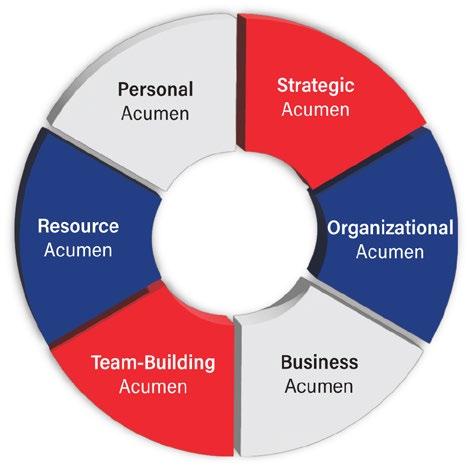
and students, we are confident that the Acumen Sextet and the findings in our book have robust, continuing relevance.
The proponents of customer success management are cer tainly singing our song. When Deloitte² heralds a “holistic cus tomer success strategy [that] enables organizations to shift to a customer-centric mindset, resulting in satisfied customers who drive long-term growth and profitability,” it rephrases a central tenet of account management at its best.
Likewise, a 2019 Harvard Business Review article³, “What Is a Customer Success Manager?,” asserts a good customer success manager “brings [the customer] ideas about how ... [to] use prod ucts better,” advocates for the customer with the supplier, keeps the customer informed about what’s coming, and regularly spends time onsite with the customer. Day by day, “[t]his individual acts as the coach of the customer relationship, bringing in technical experts, trainers, and others as needed.” Highlighting the suppliercustomer boundary zone, the article lists the “balancing acts” that a customer success manager must perform:
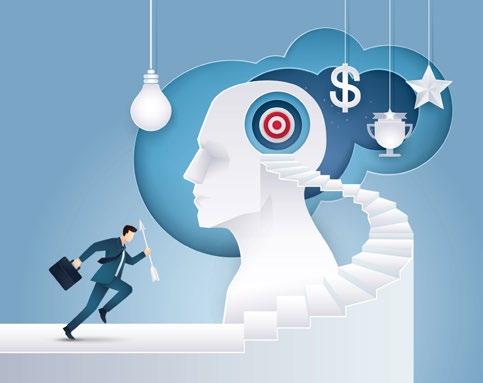
• "Mission: Customer success or company success?” As we and the article’s authors argue, it must be both — a consistent win-win outcome.
• "Profile: Salesperson or consultant?” Again, the answer is both: consultative selling based on deep understanding of the customer’s business needs and an unwavering commitment to delivering customer value.
• "Metrics and incentives: Customer satisfaction or com pany revenues? Bonus or salary?” Once more, the answer is both, in order to support follow-through efforts to deliver customer value along with efforts to maintain and increase revenues. Different firms will have different ideas on how to weight salary and incentive pay/commissions. The ultimate goal of a customer success manager, the article
argues, is “Building Customer Trust,” so “customers invite the supplier to participate in more internal conversations.” That, in turn, enables “customer success managers to unlock more value for their customers, creating a virtuous circle that ensures mutual success.” All in all, it’s a good description of the responsibilities and goals of an account manager.
However you slice things, B2B sales success continues to depend on deep understanding of the customer’s business (stra tegic acumen) and strong relationship networks at both the customer (organizational acumen) and the supplier (resource acumen). Frequent turnover in account management roles signifi cantly limits the development of customer understanding and the building of effective relationship networks. The traditional para digm of only two years, or less, on an account before moving to a new assignment is unfortunately still commonplace. Two years is far too short a time to start and sustain a win-win relationship with a large, complex enterprise customer.
For this reason, we argue strongly in Customers Win, Suppliers Win for longer account tenures. As supporting evidence, we cite the extraordinary results — a tripling or more of account rev enue — that Gus achieved in tenures of around eight years each on three accounts with strategic importance for IBM regional, national, and global organizations.
In the 1970s and 1980s, as IBM’s account manager at National Bank of North America (NBNA), a New York metropolitan area regional bank that became the core of National Westminster Bank USA (subsequently acquired by Fleet Bank and now part of Bank of America), Gus sold and oversaw installation of auto mated teller support and customer-facing ATMs in the bank’s 157 branches. This success was the first time a bank installed both technologies simultaneously; the deal became a benchmark for larger banks and an important reference sale for IBM.
In the 1990s, Gus won the deal for IBM to install a new infra structure for Merrill Lynch’s brokerage network despite intense competition from rival technology firms and equally, if not more, intense rivalry among IBM’s divisions. Gus envisioned IBM’s approach as the Total Integrated Solution and began to pursue this approach, even before Lou Gerstner arrived as IBM’s CEO and famously faced a decision on whether or not to let a planned breakup of the firm proceed. The Total Integrated Solution that Gus sold Merrill, on which he followed through assiduously to ensure it succeeded, became one of the early proof points for Gerstner’s decision to keep IBM intact and reposition the firm as a general contractor/integrator for large customers’ technol ogy needs. With updates, the infrastructure, known internally at Merrill as the Trusted Global Advisor (TGA) initiative, continues to serve the enterprise well as part of Bank of America.
In the 2000s, Gus took on global responsibility for the Citigroup account, then IBM’s worst performing major financial services
customer, and turned it into the firm’s best performing account in the financial services sector.
Throughout these account tenures, and in between at IBM corporate sales roles, Gus observed that frequent account man ager turnover hobbled the firm’s performance in other major accounts across all business sectors. Short account tenures made it impossible for many of his account manager contem poraries to acquire a difference-making understanding of their customers’ businesses, build sufficient relationship networks within customer firms, and become trusted partners in custom ers’ internal discussions. Noel has frequently observed the same issues as a researcher and consultant. Simply speaking, these account managers’ tenures were of insufficient duration for them to fully develop their competence levels on each element of the Acumen Sextet.
Pat Finn, who started his sales career at IBM and who served in a succession of increasingly senior sales executive roles at Cisco from 1996 to 2016, recalled for us, “When I joined Cisco’s New York office, account managers were changing every two years, even every year. Customers very clearly said they did not want that. We instituted a global accounts program at Cisco, and I had Gus come in to talk about the value of staying longer on an account."
As President and General Manager Americas of SS&C Blue Prism, Pat has delegated “regional vice presidents to own the customer relationship” to ensure continuity, as “the tenure of an account manager on an account is probably three years now, if not longer.” As SS&C Blue Prism account managers achieve improved results, their scope of responsibility increases, “but they also maintain their existing relationships with customer executives."
Gus’s youngest son, Walter Maikish, has followed his father in pursuing a consultative sales career. Currently Vice President, Federal Sales, at Pure Storage, he previously spent fifteen years at Cisco, mostly as an account manager selling to the same federal agency.
In his early years in federal sector sales, Walter sold mainly to the federal agency’s headquarters campus in the Washington, D.C. area. As he developed a better understanding of the agency as an organization and its dedication to its public service mission, he also built a network of contacts among IT decision makers and influencers. Walking the halls whenever possible, while staying within the bounds of the agency’s protocols, Walter became a familiar presence in its IT laboratories. These efforts contributed to his ability to eventually make sales not only to the headquar ters campus, but also to the agency as a whole, as part of its drive to centralize IT purchasing to achieve greater efficiencies and better support its mission — a goal all federal agencies were pursuing in line with new legislation known as FITARA (Federal Information Technology Acquisition Reform Act). The results were
win-win-wins: greater efficiencies for the agency in performing its public service mission; increased account profitability for Cisco; higher value and long-term cost savings for taxpayers.
One incident Walter shared is especially revealing. Cisco was adding a new product line, its first server — a best-of-breed by third-party measures. Walter recognized the new server would advance his federal customer’s IT goals. To pursue a deal, he was working in partnership with a sales rep and an engineer from a Cisco reseller. Although the reseller also carried registrations for rival IT firms, including the incumbent server provider, the sales rep assured Walter that Cisco’s server would have the reseller’s full support.
The reseller’s rep and engineer had contacts within the fed eral agency’s IT organization, but not at the level of the decision makers and influencers with whom Walter had developed good relationships. Walter had already shown his contacts the benefits for the agency of switching to Cisco servers. But the IT engineers who would be working with Cisco servers everyday were changeaverse. Long-term, system-wide benefits aside, changing to Cisco servers would increase the short-term workload for the engineers.
Walter set up a meeting for the reseller’s engineer that included both IT engineers and higher-level IT managers at the customer. Walter chose not to participate because he knew his contacts wanted to hear what the engineer would say when he wasn’t present. Regardless, seeing Walter walking by on his way to a separate meeting, a senior CIO staff member left the meeting and pulled him into his office. He told Walter that the reseller engineer was pushing the incumbent server rather than supporting the move to Cisco.
Walter thanked his contact for the information, but did not join the meeting. Afterwards, he asked the reseller’s rep and engineer why they weren’t supporting Cisco’s server, as they had promised. It emerged the engineer simply wasn’t sufficiently familiar with the new Cisco server to be entirely comfortable recommending it to his contacts among the federal agency’s IT engineers. Somewhat later it came to light that the engineer’s bosses were not happy about what had occurred and wanted better cooperation with Cisco.
Walter arranged for the engineer to learn more about the Cisco server. In Walter’s words, “The engineer then felt able to assure his customer contacts, not in a disingenuous way but in a more informed way, that he had done additional due diligence and that Cisco’s server was indeed best-of-breed, that migration to it would go smoothly, and that it would achieve the system-wide efficiencies the customer wanted."
Walter added, “Without that relationship with the senior mem ber of the CIO’s staff, I never would have learned the reseller’s engineer was inadequately briefed on Cisco’s server. I never
would have been able to help the engineer do more due diligence, so that he could help his contacts prove out the server’s benefits in the customer’s IT lab. None of that would have happened, and we certainly wouldn’t have won the deal, if my customer hadn’t pulled me into his office to tell me what was going on. The pan demic has made it a lot more difficult, but being present within the customer’s community will always be an important part of sales, whether you do it by walking the halls or through social media such as Zoom."
A final word from Walter: “The human interactions may be challenging at times, but they’re ultimately what makes sales fun.” That speaks to the personality types best suited to account management, a subject we devote considerable attention to in Customers Win, Suppliers Win.
An ex-student of Noel’s, Vijay (pseudonym), had an equally pertinent story to share about the dual need to understand the customer’s business thoroughly and to have effective relation ships throughout the customer’s organization. Vijay worked for a digital storage provider, and he learned that one group at his customer, Verizon, wanted to issue an RFP for a digital storage purchase. Knowing that other parts of Verizon also regularly needed to purchase additional digital storage, Vijay canvassed his contacts and turned a six-figure deal into a seven-figure deal.
With regard to the pandemic’s impact on access to customers, the problem will likely remain, even though it is subsiding as the most lethal stages of the pandemic seem to have passed. The problem also has an impact on giving customers access to a supplier firm’s resources. However, social media technologies like Zoom can furnish new, sometimes better ways of fulfilling the perennial demands of good account management.
Gus is a volunteer at the Fortune Society, which helps the formerly incarcerated reintegrate into society. Because of his IT background, Gus was invited to attend a recent presentation to the Fortune Society by the prospective provider of a new CRM system. Gus has been in countless such meetings during his career, but for once he was on the buyer’s side of the table.
The CRM software maker sales rep was physically present in a conference room at the Fortune Society. Via Zoom, three col leagues provided backup: a software developer, a financial per son, and a sales manager. The sales rep and his three colleagues all played roles in the presentation and answered questions. To bring all four supplier people together to share their expertise with the customer in person would have been much more expen sive, time-consuming, and complicated in a pre-Zoom world.
Again, technology and the business environment keep chang ing, but the importance of the customer relationship, and of account management best practices and principles, will endure. If you make the customer — the enterprise and the individuals
you deal with — successful, they will buy more of what they need from you rather than from your competitors. So, understand what your customer is trying to accomplish, help it be successful, and make your firm deliver what you promise.
The Acumen Sextet highlights how to do that. Our book offers many examples of each acumen dimension in action. In addi tion, we recommend following the 80/20 rule to identify where account managers are undersupported and guide investment to bolster them, including better training and coaching, to maximize win-win returns for both supplier and customer success.
How can firms that rely on strategic account management for profitable relationships with their most important customers incul cate the skill sets in the Acumen Sextet? And, how can individual aspiring account managers acquire those same skills? Programs like the global account manager program run by Noel at Columbia Business School, or the strategic account manager program offered by SAMA, can provide the foundation and guidance for additional learning by experience. Over the long run, there is no substitute for cumulative experience in the human dynamics that shape the progress and outcome of B2B sales efforts.
Although few firms have the patience, sales organizations seeking to leverage account management excellence should ideally practice career planning for their account managers that combines structured learning, informal mentoring and coaching, and accumulating experience on increasingly larger and more complicated accounts. Individual account managers can plan their own careers with the same attention to a combination of structured and experiential learning. For both organizations and individuals, the Acumen Sextet provides a robust framework for setting goals and checking progress on the path to account management and customer success. n
1 Available at www.wessexlearning.com. For SAMA executive Harvey Dunham’s interview with Noel Capon and Gus Maikish, see https:// podcast.strategicaccounts.org/customers-win-suppliers-win-with-gusmaikish-and-noel-capon/.
2 https://www2.deloitte.com/us/en/pages/consulting/solutions/customersuccess-strategy.html
3 Zoltners, A.A., Sinha, P., Lorimer, S.E. (November 18, 2019). What Is a Customer Success Manager? Harvard Business Review, https://hbr. org/2019/11/what-is-a-customer-success-manager.
Noel Capon is the R.C. Kopf Professor of International Marketing at Columbia Business School, New York. Noel can be contacted at nc7@ columbia.edu. Gus Maikish is a retired IBM executive, guest lecturer, and sales consultant. Gus can be contacted at gusmaikish@gmail.com.

AVI-SPL continues to gain significant new growth through improvements to our strategic account program. Over the last four years, our SAM program grew 33% compared to our indus try, which only saw a modest growth of 8%.
We identified systematic enablement as being a critical success factor that propelled our SAM program office and our strategic account teams. Without a holistic strategy and precise tactics to equip our teams for success, we realized our key initiatives would only achieve marginal per formance.
AVI-SPL invested in a center of excellence, which allowed our SAM program to incorporate and optimize many best-in-class practices that any organization can adopt if you have longterm commitment from senior leader ship. We have broken down the components of a successful enablement program into seven elements.


AVI-SPL has over 100 full-time dedi cated resources within our SAM program to plan, execute, and deliver upon our trusted advisor commitment to our designated
strategic accounts. Reporting directly to the executive level, our core leadership and account teams utilize a standardized global structure to provide consistency and strategic partnership to clients across all geographies and lines of business.
Creating a Customer-Centric Culture: Our SAM Program Office has also made significant resource investments beyond the SAM role. Since the launch of our program, our core focus has been on creating a customer-centric culture and global consistency to achieve trusted advisor status — to guide our customers in their digital workplace journey. To accomplish this, we struc tured our program around our clients’ core needs in a way that was demonstrably different from their previous interactions with AVI-SPL.
Focusing on the key elements that we needed to support and enable these clients, we created a three-element structure at the account level, con sisting of account strategy and planning, global deployment, and service delivery.
• Sales and Engineering: These teams conduct all pre-sales activities and provide technical thought leadership to customers. This team includes an Account Manager in each region, as well as global and localized engineering resources.
• Program Management Office: Each account has a Global Program Manager who oversees regionally dedicated Project Managers. This team handles internal alignment and risk miti gation, and serves as the single client point of contact for our project delivery line of business.
• Account Services: Each account has a dedicated Customer Service Director, who oversees Service Delivery Managers in each region. These teams are responsible for integrity and internal alignment, and serve as the single client point of contact for our service line of business.
By providing an individualized level of attention and orientation to our clients, we change the equation from their expected vendorlevel engagement. Beyond the benefit of dedicated resources, we expect each member of our core team to operate as the CEO or COO of their individual organization. They are empowered to make changes and customize the organization to fit the needs of each individual account.
By molding our opera tions to our clients, instead of expecting them to fit our regional structures, we have created multiple layers of value. We begin with thought leadership and exploring organiza tional needs to deliver to our customer’s customer. Next, we examine how the digital workplace can enable the workforce to meet those needs. On-time delivery and performance from our dedicated global team simplify the global procurement process, saving time and money while enabling their workforce to move faster. The service teams ensure that technology is functional and an asset for enabling communications, rather than a roadblock.
We feel that communication is the best tool we have as a SAM program. This communication occurs at both leadership and peer levels. To best communicate throughout the organization with the least amount of communications fatigue, we split our customer accounts into our Global and Enterprise account tiers. This pro vides a better peer account context for comparison. We similarly verticalize our many internal communication sessions to enable peer learning and sharing.
Continuous Improvement: The leadership team of our SAM program regularly attends SAMA conferences, webinars, and other continuing education activities. As we gain best-practice knowledge and other account planning structures that provide better methodologies for strategic accounts, we workshop ways to apply these items to our current practice. We communicate these regularly throughout our team through a variety of standing
communication sessions.
CSAM Certification: Each of our Global Account VPs has either completed or is in the process of completing their SAMA Certified Strategic Account Manager (CSAM) certificate. Giving all our team members the same framework and language not only improves their relationships with their clients but provides a consistency of ideas and framework for the entire team.
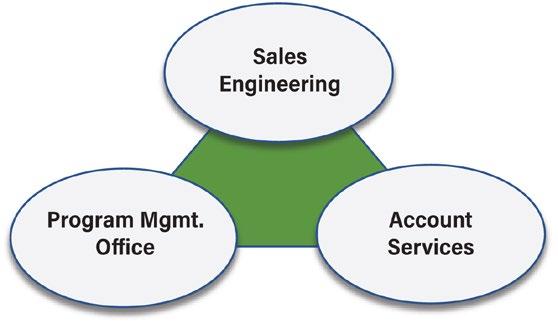
Weekly Check-In: Many of our best ideas come from hearing how peers are solving similar challenges. This weekly session allows SAM Program Office management and Global Account Management VPs to raise issues, brainstorm solutions, and hear how other accounts are solving the challenge at hand.
Executive Briefings: To drive executive sponsor engagement, we brief the executive sponsor teams on the growth, alignment, and execution of operations in each account. This prepa ration forces each team to evaluate their actions and program status, and allows them to address their needs to the highest levels of our organization. As a SAM program man agement organization, we develop unique questions and angles of presentation for each event, encouraging and elevating the strategic thinking of each team.
Annual Team Summit: As a team with global geographic dis tribution, we see the value in face time and team building when possible. Our team members convene at a variety of global trade shows and industry events, but we bring all team members together once each year for a unique event focused solely on our SAM program organization. This summit includes a strong focus on growth enablement and account planning, and challenging our team members to elevate their thinking through mini-training sessions and workshops with product-line leaders.
SAMA Certification: We have dedicated a variety of resources to continue the personal and career development of every mem ber of our SAM team. Since our program’s inception, our SAM Program Office has invested in sponsoring all of our account leaders to earn their SAMA CSAM certification. This year, we embarked on a special learning and development program with SAMA to provide core trainings to a second cohort of SAM program team members to further advance SAMA methodologies
and capabilities across our teams. Outside of SAMA, we also incentivized team members to gain functional certifications, such as Project Management Professional (PMP), that are relevant to their job roles. AVI-SPL further offers tuition reimbursement programs to support team members’ higher education pursuits.
Mentoring Program: Our corporate organization sponsors a formal mentorship program in which we pair aspiring junior team members with a senior leader in the organization. The mentor ship program provides a structured charter, templates for goal identification, discussion topics, and research articles to help guide monthly one-on-one conversations between mentor and mentee. Our mentorship program has enabled our team to better connect with colleagues and offers opportunities for meaningful professional development.
Our Diversity, Equity and Inclusion initiative is highly relevant to our SAM team members, and our customers. We have created Employee Resource Groups (ERGs) across a variety of topics designed to enrich our company culture and create stronger, authentic bonds across disparate teams of people. Many of our SAM team members have been actively involved in these groups, which not only yields personal fulfillment through a sense of con nection but also dramatically improves internal alignment.
See Figure 3 for a breakdown of AVI-SPL’s organizational align ment tools.
Our SAM leadership team drives execution of our strategic accounts roadmap through a commitment to being responsible to our team members and clients. Utilizing collaboration tools to maintain visibility and accountability, we move forward in step. When developing roadmaps, we explicitly review and incorporate the voice of the customer in every decision.
Historically, AVI-SPL has been a geographically siloed organi zation combined with highly matrixed technical teams, providing a challenge to organize into a single global structure. Of great value to us are tools that look across boundaries and provide the information we need at a glance. By developing individual account dashboards, we are further focused on building data visualizations. We are currently working with a variety of internal stakeholders to build further unified, global, financial, and program management dashboards — items that our larger business is recognizing as necessary through the past achievements of our strategic accounts roadmap.
Our Customer Advisory Board (CAB) is highly rated by our clients and viewed as one of the best benefits of our program. Each of our designated Global Accounts is invited to participate in this exclusive group of board members to advise AVI-SPL on our strategic direction as well as to engage in peer-to-peer learning and community building. Our CAB is comprised of the senior technology and employee experience leaders of some of the world’s largest companies across multiple industries. We leverage our CAB as a key source of voice of customer input to influence our SAM program roadmap.
Internal communication plans include prescriptive expectations for several touchpoints ranging from weekly global account team huddles to review near-term strategy execution, to internal executive business reviews in which the SAMs provide an account plan briefing to all AVI-SPL executive and regional senior leadership. In these sessions, our regional and business unit (BU) leaders have an opportunity to learn about each account’s strategy, how it impacts their region/BU, and what they can do to best support client outcomes.
Our external communication plans ensure a superior experience for our designated accounts and include many SAMA methodologies including client “Careabouts,” “Them, Us, Fit, Proof” presentation style, and a joint partnership scorecard included in our Quarterly Strategy Session templates. We’ve found that standardizing our external communication plan and content structure helps solidify our SAM program’s brand value within our customer base.
We’ve introduced Strategic Accounts Dashboards as a program asset to aggregate global data at the account and program levels, providing our team with actionable performance information to improve efficiency and ensure a globally consistent experience for our customers. Each account’s dedicated regional project manager and service leads provide weekly reporting on any risks or opportunities within the account globally and assign a red/amber/ green status. These statuses are reported on our analytics dashboard for program and executive review and allow our team to efficiently identify where to best apply risk mitigation.
We created a standardized, life-cycle process to review new candidate accounts and assess the strategic fit and performance of existing accounts in the program. To support this process, we created a standardized ROI algorithm and benchmarking assessment for Value, Strategic Alignment, Relationships, and Growth Potential. Using this standard set of criteria for all accounts, we refresh the data set every six months for new and existing accounts and review using a committee method in which each of our executive and regional leaders have an opportunity to participate.
We require a personalized client playbook for each of our designated Strategic Accounts designed to document each customer’s preferred processes, preferences, and needs. We use this internally to ensure internal awareness, buy-in, and knowledge transfer of voice of customer to all AVI-SPL employees that support Strategic Accounts.
We treat our account plans as living and evolving assets. The use of a strategic account plan-focused platform tool allows us to better communicate key client information across our BUs and regions as well as provide continuity and efficiency of knowledge transfer should we experience churn in any team member positions.
Our SAM Program Office leadership team utilizes a central roadmap with associated tasks to maintain vision, execution, and evolution. Using voice of customer inputs, like our Customer Advisory Board, we’re able to document, plan, and execute program feature enhancements across a matrix organization to better serve our customers. Showing individual tasks in a calendar view with color-coding makes it easy to see responsibility and deadlines across contributing roles. New feature enhancements and dependencies are easily created and adjusted as needed.
We utilize Microsoft Teams as the main communication platform across AVI-SPL. Beyond enabling our team to communicate, we utilize the Teams feature of this platform to maintain a real-time inventory of all documents, communication plans, presentations, and other related documentation for our entire program. Individual account teams enable each account-based team to easily communicate and find documentation they need including client global playbooks, contracts, etc. New and existing team members across regions and BUs have efficient access to everything they need to best support each Strategic Account.
We track our roadmap progress in a centralized view providing the full team with access. Showing individual tasks in a calendar view with color-coding makes it easy to see responsibility and deadlines. Effective planning enables new feature enhancements and dependencies as needed. Our SAM program leadership team meets weekly to review roadmap feature status, new feature enhancement recommendations, and action plans for implemen tation, including launch communication. Also included in this meeting are senior and executive leaders of our two core lines of business to ensure internal alignment between what our cus tomers need, what features we’re planning in our SAM program roadmap, and how we can strengthen our global product strategy.
Through many in-depth conversations with our clients, we rec ognized that they highly value transparency from partners. We are continuing to develop new tools to improve both our management and the client experience. We create joint value by first listening to our Customer Advisory Board (CAB).
Our Return to Office Initiative: In 2021 and 2022, the board’s
focus has been on Return to Office and supporting the employee experience as they move into a new hybrid work world. Given the complexity and uncertainty of this conversation, we saw an opportunity to offer the power of community sharing across our customer base as an exclusive benefit of the program.
We organized several client work sessions focusing on indi vidual aspects of struggle in defining what return to office and the hybrid work environment mean to technology leaders. In these virtual sessions, we facilitated discussions in which each client member could speak to questions such as:
• How are you preparing for RTO?
• How do you plan to enable Meeting Equity between in-person and remote meeting participants?
• Beyond technology, what human behavior elements do we need to consider in the RTO design?
• How has human behavior changed as a result of the pandemic and how will that affect them at work?
These sessions provided each client member with not only rich
discussion and thought-provoking debate but, more importantly, a sense of community and solidarity during a time where so much uncertainty exists. Members rely upon AVI-SPL to connect them with peers, not just to discuss approaches to solving common problems but also to establish and grow peer relationships that could be leveraged in the future.
Strategic Account Dashboards: We have deployed Strategic Account Dashboards, capturing operational (program manage ment) statuses. Populated with real-time updates regarding quote statuses, delivery lead times, and current project installa tion details, the dashboards enable clients and our management teams to easily find critical information and see trends. This insight allows clients to make educated decisions regarding when to provide AVI-SPL information to receive a quote by their deadlines and allows AVI-SPL teams to better focus on the systems at hand. This expectation setting continues through project installations, providing clients with the assurance that we are busy working to meet their goals. These dashboards reduce the need for tactical reactions and enable our SAM program leaders the “privilege of focus” to further grow our program.
We’ve repackaged our new Strategic Account Dashboards as an exclusive client benefit of program designation. Our customers can now use these global analytics to document performance and track their own corporate goals for their management team and peers. We have created heroes simply by repurposing a tool that helped our team do their jobs better into a tool that helps make our clients successful.
Our SAM Program Office has built the vision, plan, and infra structure to enable our team to achieve exceptional outcomes for our clients. We’ve seen dramatic, tangible results in our top KPIs compared to our pre-program state with existing strategic accounts. Highlights of the comparative analysis include:
• Customer Satisfaction: 127% increase of average Net Promoter Score.
• Loyalty & Expansion: 280% increase in wallet share.
• Diversification: 70% increase in the mix of services.
• Relationship Equity: $150M+ in new business won with refer ences from more than 15 strategic accounts.
Leveraging Successful Account Relationships: We crafted a way to measure objectively the impact of the relationship equity we’ve gained as a result of the program’s past proven value. One way we measure this is how frequently our strategic account customers are willing to serve as an AVI-SPL advocate and pro moter to potential new clients. We currently track the monetized relationship equity of the program by quantifying how many of our accounts are willing to be star references, how often they are willing to be references, and what incremental business AVI-SPL
has earned as a result of strategic account customer references.
When we first launched the program, we struggled to identify client references, let alone capture new business as a result of client experience sharing. Five years into our program, we can directly attribute $150M+ won in incremental total contract value as a direct result of strategic account clients advocating on our behalf.
Account Retention: A significant business result of the pro gram is the retention value of our strategic accounts, especially during the uncertainty and instability of the pandemic. In our industry, losing a major account because of poor performance or lackluster relationship requires a minimum of two to three years to earn back the business. Further monetizing the value of the program and the preservation of these relationships, we’ve calculated the retention value of our accounts using an algorithm that considers the time to earn back lost business, the value of both run-rate business and renewals, and the assumed risk factor of the percentage of business lost. Even with a conservative risk factor, the result quantifies the retention value of the program to be vital to AVI-SPL’s total company revenue.
Benchmarking Initiative: In addition to our individual KPIs, we’ve introduced a new benchmarking exercise in which we compare our KPI scores to average scores in the same catego ries in both our industry and non-SAM AVI-SPL customers. This exercise helps us provide tangible evidence of the impact our SAM program has on key business metrics, including growth, diversification of spend, and profitability. The below results show the stark difference in performance resulting from our SAM pro gram investment:
Growth: We recognize a significantly higher compound annual growth rate than our industry, and more than double that of our nonstrategic accounts.
Diversification of Spend: We recognize significantly better product mix in our core lines of business. This metric is a key corporate-level KPI as we aim to increase high margin service revenue as a long-term business strategy.
Profitability: Significant increase in individual account, project, and service contract profitability.
By investing in a center of excellence — through thought leader ship, analytics, and the pursuit of ambitious goals — our strategic accounts team demonstrates to the rest of the company what is possible when the customer is at the heart of the conversation. n
Danielle Matteson is Vice President of Strategic Accounts at AVI-SPL, where she leads strategic program development and operations for the Global Accounts Program. Danielle can be contacted at danielle.matteson@avispl. com.
Velocity is the official publication of SAMA. It provides a forum for the exchange of information relating to the practice of strategic account management and is the vehicle that enables SAMA members to be the best community of practice.
Thousands of account professionals, SAM managers, and C-level executives at the world’s largest and most forward-thinking companies read Velocity to learn about best practices and next practices from professionals who are facing the same challenges they are.
By having an article published in Velocity, you’ll be recognized as having expertise on the topic, and you’ll elevate your visibility within the community and your own organization. Your organization will benefit by having its name brought to the attention of the wider community as a thought leader.
But you’re not a writer, you say? Not a problem. Your professional knowledge is more important than your writing skills. The SAMA editorial staff can help with grammar, organization, and style. If you can write a business letter, you can author an article.
If your firm has a public relations, marketing, or communications department, they may be able to help you document your knowledge and experience. Do make sure, though, that you provide them with in-depth information and that you review their documentation of your knowledge and experience for accuracy and to ensure it meets the article requirements below.
Case studies are particularly welcomed, answering the questions and following the format of:
• what was the issue;
• what were the steps taken to address the issue; what resulted for the SAM, the SAM’s
organization, and that of the SAM’s clients?
Articles must be directly applicable to strategic account management (not just sales). It helps to keep in mind that SAMA’s audience consists of those who work in complex, highly matrixed organizations and focus on building strong and mutually beneficial relationships with a company’s most important customers and partners.
Articles must avoid directly promoting a product or service.
Velocity articles range between 2500 and 3500 words, covering three to five pages. These ranges are approximate; somewhat over or under these word counts is fine if justified by the content.
Articles from consultants and academics are welcome, but bringing aboard a practitioner co-author will get you to the top of the pile. If that’s not possible, please consider adding concrete, real-life examples from your work with clients.
Graphics that aid in understanding an article are also welcomed. In addition, please consider contributing original research in graphic form to Velocity’s Data Watch column.
If you’ll be working with graphic designers or printers, have them contact gnaurocki@ strategicacccounts.org for the more technical requirements for graphics.
✓ SAMs and sales executives, managers, and account managers at all levels
✓ Procurement, strategic sourcing, and supplier relationship management executives
✓ Independent consultants and academics working with strategic account organizations. Articles co-authored by a consultant and a practitioner, or an academic and a practitioner, lend credibility to theory.
While authors may choose a topic most relevant to their own experience, some of the topics most relevant at this time are:
• Organizing and running the SAM program central office
• Going deep: uncovering strategic information from and about the customer
• Leveraging technology, data, and/or analytics to change the way you drive significant revenue with your customer, working internally, and/or collaborating externally
Implementing innovation
• Deploying disruption
Quantifying and validating customer value in a case that resulted in a valuebased price solution or that prevented losing a deal and/or the customer
An article doesn’t need to contain ALL of the following, but the more boxes it checks off, the higher priority it will be given.
✓ Practitioner author or co-author
✓ If written by a consultant or academic, must incorporate practitioner point of view
✓ Real, concrete business examples that exemplify the concepts discussed in the article
✓ Hard data
✓ Innovative concepts/"Next practices"

✓ Human element
If you already have a white paper, case study, or article ready to go, send it to Velocity associate editor Nic Halverson at halverson@strategicaccounts.org. You will be notified that your article has been received and is under review. If you just have an idea for an article, send a brief description and any supporting materials to halverson@strategicaccounts.org.

